|
Do you recognize this landform? It’s the continent of Antarctica. It’s the only continent without a single country, although 22 have a ‘consultative’ status. That’s because they agreed to a 1959 treaty. They promised to keep Antarctica as a scientific preserve, like a national park. It was to be preserved as a place of scientific study and environmental protection. One of my critique partners, Sandra Martin Denis just got back from Antarctica. She was there during the summer, the warmest time of year. It’s funny – Antarctica’s summer is during our winter. Part 1: It came straight from Sandra’s trip – her photos and her words. Enjoy! Penguins live in Antarctica. Penguins live in colonies. They're great swimmers. They spend half their time in the water and half their time on land. They are expert divers. They eat krill, fish, and squid. Penguins mate for life. They build nests of stones. Most penguins lay two eggs in a clutch. The male and the female take turns incubating the eggs, except for the emperor penguin. They build "highways" on the snow. Their main enemy is the Leopard Seal. Sandra didn’t have a picture of one, but I found these two on Pixabay. Yikes! Look at those teeth. OUCH! Part 2: A trivia question about Antarctica’s climate. What is the average temperature range for Antarctica per year? 10°C to -60°C 10°C to -10°C 30°C to 20°C -5°C to -10°Celsius 50°F to -76°F 50°F to 14°F 86°F to 68°F 23°F to 14°Fahrenheit Take a guess, then check below the map. I completely missed this one. Antarctica is warmer than I thought! The annual temperature for the whole continent ranges from about −10°C on the coast to −60°Celsius. In Fahrenheit that’s 50°F to -76°F. Wow, 50 is way warmer than I imagined. That’s like a warm March day in Ohio! But it all depends on – location, location, location.  That 50°F was near the coast, in the summer. That’s where Sandra was, but she said she wore a parka. Maybe at night when the sun goes down, the coastal temperature drops too. In the winter – that coastal temperature gets even colder, -40, and that’s the reading on both Celsius and Fahrenheit thermometers. That surprised me. I’ve never seen the two temperature scales match, with the same exact number. Incredible! I’m glad Sandra didn’t go inland, especially to the mountaintops. Their warmest temperature – -22. That’s one of the worst winter days in Ohio, ever. I don’t want to think how cold it gets in their winter. Ready? That’s -112?! Holy frostbite, that’s cold! And the coldest temperature ever recorded on earth? -128.56, at the Vostok station in Antarctica. That’s where scientists live. And the date – July 21, 1983. YIKES! Part 3: Wind Speed and Snowfall by the Numbers  Those temperatures, like -112 F are without the windchill. To find that, I looked up the wind speed on the antarctica.gov link below. I don’t want to do the math, but if you can imagine, an Antarctic wind can blow at 100 km/h, and it can blow for days! I don’t do kilometers, so in miles per hour – that’s 62. If you want to imagine it, stand beside a highway. That’s how fast cars will drive by. I’m feeling colder already! Are you ready for the strongest winds? That’s 200 km/h or 124 mph, or the wind speed of a Category 3 hurricane. YIKES – x 2! ☹ As for snow – the average accumulation for the whole continent of Antarctica is 150 mm of water per year, or 5.9 inches. If you’re not sure what that looks like, find 6 on a ruler. When you go inland to the elevated plateau, the annual value drops to 50 mm. That’s only 1.96 inches. But at the coast, it rises to 200 mm or 7.87 inches. But for the heaviest rain or snow, find the peninsula in the northwestern corner of the map. It stretches to the north, and the Bellingshausen Sea is below it, to the south. It’s not labeled, but it gets over 1000 mm of water. In inches that’s 39.37. Think yardstick, then add your index finger for another 3 inches. That’s a lot of water! 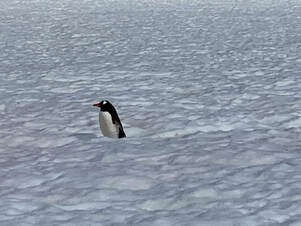 Sources: For more information: www.antarctica.gov.au My source: What is the average annual... | Trivia Answers | QuizzClub Map: By Robert Simmon - en:Internet Archive - https://web.archive.org/web/20070823123915/http://earthobservatory.nasa.gov/Newsroom/NewImages/images.php3?img_id=17838 (originally http://earthobservatory.nasa.gov/Newsroom/NewImages/images.php3?img_id=17838 NASA Earth Observatory), Public Domain, https://commons.wikimedia.org/w/index.php?curid=3126858
0 Comments
I wrote the original post back in November, and I shared the update on my vlog. At the end, I predicted where I would be at the end of February. Today is March 13, and here’s where I am on my journey to tell the story of the men who signed the Declaration of Independence. Part 1 – Where I Was: I believe you need to know where you were, to take stock of where you are. It also allows you to see progress, and that’s a good thing. The original post went live on November 20. I was on Chapter 17, and I was writing about Ben Franklin. Oh My Goodness! I remember that chapter – not in a good way! It took me 3 weeks to find my way in. If you’d like to read the original post, here’s my link: http://www.rindabeach.com/blog/me-and-my-middle-grade-novel-where-am-i-now My vlog went live on January 28. I finished Chapter 21 with Francis Hopkinson that week. If you’d like to listen, here’s the link: https://www.facebook.com/watch/?v=2796790403792630 Part 2 – Where Am I Now? This week I finished Chapter 30. Only 27 chapters to go 😊 And the signer – Carter Braxton from Virginia. I’d never heard of him, but now I won’t forget him either. His mother died after she’d given birth to two baby boys. He was her second son. Carter married young like his father, and his wife died after she’d given birth to two baby girls. Heartbreaking. But he married again. She gave birth to ten boys and six more girls. Eighteen – that’s a lot of children! Milestones from my Journey : Chapter 19 = a third of the way to the end. Chapters 28 = halfway done. I celebrated both milestones with a tiny bit of shopping. It makes a memory and keeps me moving. Chapter 38 = two thirds of the way to the end. That’s seven chapters or seven weeks from now, I hope. Story Stats – 29 founders, dead Two states with all its signers dead – North Carolina (3) and New Jersey (5) The state with only one death – Massachusetts. The signer, John Hancock Part 3 –My Conclusions and How They're Working: Back on July 17 of 2023, I wrote a post about failing. I even thought about quitting. Back then I was struggling with Stephen Hopkins from Chapter 12. Here are my conclusions after a week of struggle, plus the answer to the postscript – how my conclusions are working.  1. It’s OK to fail. Sometimes you need to stop and make a new plan. The last time I failed/got stuck was on Chapter 17 with Ben Franklin. 2. Change when you need to. When I get stuck, I should take a break. I need fun and family too. I still take breaks when I need to. But after Chapter 17, I found a new technique. I haven’t missed a deadline since then 😊 3. When I get stuck, I should step back. Later I’ll see how to edit and revise. I don’t need to step back with my new strategy. At least so far 😊 4. Each chapter feels like I’m climbing some steep hills. I need to write at this story’s speed. Sometimes that’s fast, and the story just flows. Other times it’s slow or no-speed at all. That’s when my ideas need time to develop. I still feel like I’m climbing steep hills, especially at the beginning, but my new technique makes it easier to climb that first one. Then the story usually flows along. Sometimes I find a steep hill near the end, but the strategy works there too 😊 Post Link: http://www.rindabeach.com/blog/when-you-feel-like-quitting-inspiring-quotes-for-you-and-me Vlog: https://www.facebook.com/watch/?v=6554628911271624 Part 4 – Three New Strategies: How did I find them? The old-fashioned way – trial and error – until I find what works. For today. When they stop working – I go back to my drawing board.  1. Finding my way through research – I’m much faster than I used to be. I look for three internet sources for each signer, then what was going on just before his death, and finally what Charley and his family were up to. Sometimes I find my way into the chapter from it, but a lot of times, I don’t. 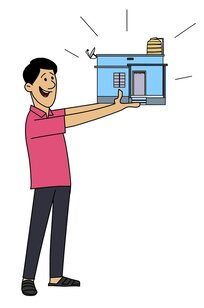 2. I write less – but not on the chapter of the week. I still write all day, taking breaks when I need to get up, until about 8PM. Sometimes just getting up and moving around will get me unstuck. And, so far I’m staying on track, writing a chapter a week. The less, that’s on my blog. I realized over the summer, when I thought about quitting, something had to give, and it couldn’t be me. So, now I write a blog section in two days. The first day I put up pictures and outline what I want to write. The second day I write and revise that section. If life gets in the way, and occasionally it does, I give myself a day of grace. Less is also on my vlog. I’m doing more classic posts. LOL, it’s just another way of saying an old one. I also look for blogs, beyond the original one, but they need to add to the vlog’s topic.  3. This is the BIG ONE! I write questions to Charley (Charles Carroll), and I answer them. After spending the last year and a half with him, I know him pretty well. This week I’m working on Oliver Wolcott. I’d never heard of him either. He was the governor of Connecticut in 1797, and a Major General in the Continental Army. He was one of the heroes of Saratoga, one of the first big wins for Washington’s army, but – that didn’t help me figure out how to write Chapter 31. What did? Questions! I started with ‘Where is Charley?’ and ‘What is he doing?’ Sometimes that works. Sometimes I have to ask more questions. I knew Oliver died on December 1, and Charley would have been in the Maryland Senate. So I asked what he might have been doing. That was a dead end, but it’s part of the process. Then I asked the question, and I hit pay dirt! I asked what Charley was doing at Christmas time. I got the answer the next morning. I realized I’d already written something about a priest visiting him. I don’t know if one really did, but it fits my research. Charley’s cousin was the first Catholic bishop in the US, and he started St. Mary's College and Seminary in Baltimore. The priest had to visit, because there were no Catholic Churches in Annapolis. Not yet. The first one was built next door to Charley’s house. BINGO! I started writing, and I finished the WHOLE rough draft in one day. I even started my first round of revision. I didn’t finish – I needed to write this part of the blog for you. If I hadn’t found my way into the chapter – I would have asked Charley more questions, until I found it. I know when I have a good answer, because I can keep writing. Even when I question the last paragraph I wrote. When that happens, I take a break, AND I can push past it. Part 5 – My New Middle Grade Goals:  The next one – to finish Chapter 36 by May 3rd. That’s the first Friday in May. My critique group is taking Good Friday off. Then I'll return to my usual pace – a chapter a week – to research, write and revise. It’s the fastest I’ve ever written, and the most I’ve written in years. I have another goal that’s on the back burner. I’m moving as quickly as I can, but the other chapters come first. My second goal is to polish the first 3 chapters until they’re submission ready. It’s a work in progress. I bought this book last September, in 2022. I shop whenever I’m watching an OSU football game. It’s a superstition, but it makes me feel like I’m doing my part to help the Buckeyes win. 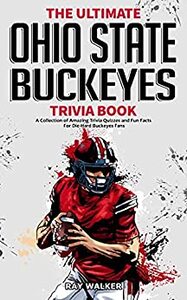 My Stats from Last Year: Trivia score Name Recognition Chapter 1 5 of 20 -- Chapter 2 7 14 of 28 Chapter 3 11 11 of 20 Chapter 4 5 9 of 22 Chapter 5 5 7 of 21 Chapter 6 5 12 of 38 Chapter 7 8 10 of 26 That means my best scores came in Chapter 5 for both trivia and name recognition. It was all about catching the ball, AKA the receivers. Here’s my link to last year’s trivia: http://www.rindabeach.com/blog/trivial-pursuit-the-ohio-state-football-way Game Day Saturday, September 16 - Chapter 8 - How I did, and what I learned. Chapter 8: Coaching Carousel: I thought I’d do better on this chapter than I did. I’ve been following Ohio State football since the 60s. I can name the coaches in order . . . Woody Hayes, Earle Bruce, John Cooper, Jim Tressel, Urban Meyer, and Ryan Day. I double checked, and I missed one. Luke Fickel was coach for less than a year. He came between Tressel and Meyer. I have a soft spot for Luke’s wife, Amy. She comes from Spencerville, Ohio. That’s just up the road from my house in Wapak. In spite of knowing all that, I was back to mediocre again, 7 right out of 20. YUCK! And on name recognition, I knew 11 out of 23. Yep, mediocre, but, these questions are hard! These are my four favorite OSU coaches. I don’t know any of the ones before Woody. I was born in 1959, and Woody became head coach in 1951. He was still there during the fall of 1978 when I was a freshman. I feel sorry now for the next two coaches . . . There was no way they could compare to Woody, and the three that followed . . . I loved them like Woody 😊 Now for my Pick 3 questions, they’re all about the best OSU coach ever – Wayne Woodrow Hayes! 3. Including Woody Hayes, how many coaches have the Buckeyes had since hiring Hayes in 1951? A. 4 B. 5 C. 6 D. 7 I got it right . . . 7! You can double check the answer in the first paragraph. I named those 7 coaches in order, and I only forgot 1. Not bad! 11. How many Big Ten championships did Woody Hayes win as the Buckeyes’ head coach? A. 13 B. 15 C. 11 D. 17 Shucks! I guessed 17. Too high! The answer . . . 13. I guess even Woody couldn’t win them all, but he sure tried. 18. Urban Meyer and Jim Tressel combined to coach more All-Americans at Ohio State than Woody Hayes. A. True B. False I missed it! I said true, that two coaches could produce more All-Americans than just one. Wrong! I forgot that Woody coached for 28 years, while Jim and Urban only did 15, altogether. Wow! What a coach! Fun Fact: Before Woody came, OSU was known as the coaches’ graveyard. Game Day Saturday, September 23 – Chapter 9 - How I did. I started Chapter 9 during the Notre Dame game, and it was quite a game . . . I only managed to answer the questions. That’s it. Today the Buckeyes are playing Maryland so I’m going to try to do the writing. Chapter 9: Championship Caliber: I had no idea how I’d do this time. Who remembers championships after they’re over? Not me! I was surprised I actually did a little better . . . up from 7 to 8 on the multiple-choice questions. On name recognition I knew 10 out of 20. Woo-hoo! That’s 50%. Still mediocre, but a little bit better! Game Day Saturday, October 7 - Chapter 9 – What Resonated with Me None of the questions or their answers resonated with me, but the additional information from Ray Walker did. During the Notre Dame game, and afterwards something struck home. I didn’t know that Lou Holtz made a few comments about the Buckeyes, and Ryan Day answered back after the game, that it was Ohio against the world. It feels like it’s always been that way.  - Ray noted that in 2018 ESPN ranked the national champions from the BCS years, and they put the 2002 Buckeyes last. The reason, the Buckeyes had a lot of close games as they finished out the season. ESPN said they just weren’t dominant enough. Gee, I thought winning was everything! It didn’t matter that the Buckeyes were the first to win 14 games in a season, or that they were 1 of 9 teams on the list to go unbeaten and win the national championship. When you’re ranked high, you have a target on your back. Add in that 2002 team were the first #2 to beat a #1 during the BCS years, but that didn’t matter to the powers at ESPN that made the rankings. (Like always, Ohio against the world) Game Day Saturday, October 14 – Chapter 10 - How I did I didn’t! I went to a baby shower, but I kept track of the score. When I got home, the game was still on, but we had company, so no chapter 10 ☹ But the Buckeyes beat Purdue 41 – 7 . . . Woohoo! Game Day Saturday, October 21 – Chapter 10, Finally! How I did & What Resonated with Me Chapter 10: Going Bowling: I had a bad feeling about this chapter . . . It’s either the kind with one ball and nine pins, or the kind that involves holiday football games in warm destinations. I figured I’d be terrible at both ☹ I’m glad I was prepared. I went down, 5 out of 20 on the multiple-choice questions. FIVE! That’s like a 25%. OUCH! On name recognition I knew 7 out of 20. A 35% is a little better, but not much. Double OUCH! What Resonated with Me: 1. I recognized two names – William White and Bobby Hoying. They were both local boys, from the county right next door. William grew up in Lima and played football for the Spartans. Northwest Ohio was thrilled when he became a Buckeye, and so was I. 2. Bobby grew up in St. Henry, and he played for the Redskins. He was chosen as Mr. Football back in 1990, out of all the high school players from across the state. Bobby went from playing quarterback in a small town in Mercer County to playing at The Ohio State University. It’s incredible when a local boy succeeds, and both Bobby and William made it all the way to the NFL. WOW! 3. I found a not-so-good memory in this chapter about bowl games, with Clemson. They were the team that got Woody Hayes fired. He was and still is my favorite coach ever. It began when Clemson intercepted a pass near the end of the game. Woody was known for his temper, and he grabbed the player’s jersey and hit him. The Buckeye team captain pulled Woody off the kid, and he was fired the next day. It was a sad end for Woody and his coaching career, but he was forgiven, and I’m glad his contributions have not been forgotten. PS – OSU lost that game in 1978. They’d lose again to Clemson in 2016 and 2019, but they finally beat them in 2021 . . . 49 – 28. There’s nothing like the thrill of victory after those 3 defeats. Game Day Saturday, October 28 - Chapter 11 - How I did, and what I learned. Chapter 11: Draft Day: I had no idea how I’d do in this chapter. I’ve never paid attention to the draft, ever! My results – I went up one, to 6 out of 20 on the multiple-choice questions. That’s 30%. Guessing stinks as a strategy, but it’s all I had ☹ On name recognition I knew more names than last time, 22, but there were 30 I didn’t know. My score – 22 out of 50, for a 42%. YIKES! ☹ I discovered after reading this chapter that draft day doesn’t always lead to a contract. It means nothing, until that contract is signed. Here are 3 stories about 3 superstar Buckeyes. 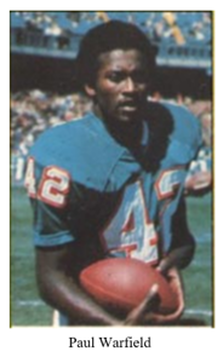 #1. Have you heard of Paul Warfield? The Cleveland Browns drafted him in 1964. I was only 5 years old, but somehow, I remember he was fast. As a Buckeye he was a halfback. That meant he lined up with the offense, and he ran the ball down the field. Funny, I thought that would make him a running back! Cleveland picked him as a defensive back, but they also knew he could catch the ball. So, they decided to try him as a receiver. The result – Paul learned how to catch the ball that first year in the NFL. I guess your team gets a HUGE say on what position you play. 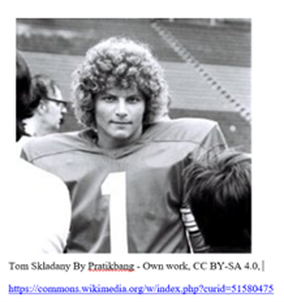 #2. Tom Skladany is another name I remember. He left OSU before I came in as a freshman. He was a gifted kicker, the first specialty player to ever get a scholarship to a Big 10 school. The Browns picked him in the second round of the 1977 draft, but he never signed with them. He wound up sitting out the whole 1977 NFL season. Why? Evidently Art Modell called his agent ‘the biggest thorn in the side of professional football.” Art put Tom on the trading block, first with the Rams in return for two second round picks. Later he shipped Tom off to the Lions for a second and seventh round pick for 1978. OUCH! 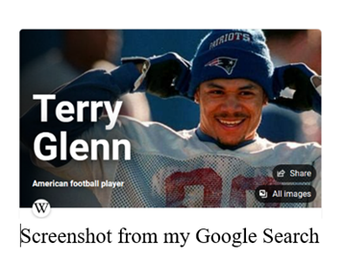 #3. Terry Glenn’s story from 1996 caught my eye. I was a mom with three kids by then, and I had time for football again. Terry had great hands . . . he was a receiver, and he was the seventh pick, in THE first round. Talented, right?! Well not enough for Bill Parcells, the coach for the New England Patriots. He said, “If they want you to cook the dinner, at least they ought to let you shop for some of the groceries.” Evidently Parcells didn’t want Terry, but two higher ups did . . . owner Bob Kraft and general manager, Bobby Grier. I have a feeling Parcells was happier with Terry by the end of the season . . . He set a rookie record of 90 catches, and they helped the Patriots into the Super Bowl that year. Game Day Saturday, November 4 - Chapter 12 - How I did, and what I learned. Chapter 12: Writing the Record Book: I had no idea once again how I’d do on this chapter. I would hear someone set a record, then promptly forget about it. My results on multiple choice questions – I went up one again, to 7 out of 20. That’s another 35%. Guessing isn’t the best strategy, but it’s all I had, again ☹ On name recognition this was one of my best scores, I knew 20, and I didn’t recognize 12. My score – 20 out of 32, for a sky-high 63%. That’s still a D or an F. YIKES! ☹ Game Day Saturday, November 11 - Chapter 12 – Three Record-Setting Stories 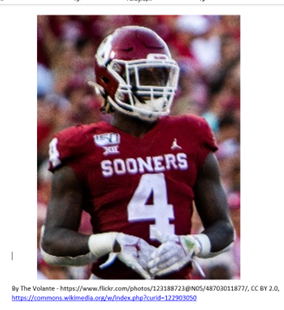 #1. What would you do if you were the quarterback, and your passing game was off? Duh! You’d hand the ball to a running back. In 2020, that’s exactly what Justin Fields did in the Big Ten championship game. He handed the ball to Trey Sermon who had just transferred in from Oklahoma. I’m glad he did! Trey carried the ball 29 times, right into the OSU record book. He ran 331 yards that day against the Northwestern Wildcats. His best two plays, in the third quarter. Trey ran 65 yards, then 33, right into the end zone for a touchdown. That gave the Buckeyes their first lead in the game. Imagine, the Buckeyes behind in the third quarter?! OUCH! In the fourth quarter Trey’s running game gave OSU another touchdown and a spot in the College Football Playoff. He was the MVP, duh! Thanks, Trey, for saving the game! Bonus Source: Trey Sermon - Wikipedia 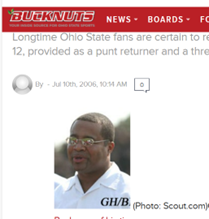 #2. Meet Garcia Lane. This is the only picture I could find of him, and it was long after he set his OSU record in 1983. I graduated in June 1981 so I remember him well. He was a great player! His record – a pair of punt returns in ONE game against Purdue. The first came in the third quarter. Garcia caught the ball on his own 37, ran to his left, then cut back to the right. That’s when he found his hole and ran down the field for a 63-yard touchdown. Woohoo! Later in that same quarter, the Boilermakers punted to Garcia again. This time, no need for cutbacks. Garcia followed his blockers for another touchdown. This time – for 71 yards. Would you believe those were the second and third touchdowns of his OSU career? I didn’t realize returning a punt for 2 touchdowns in one game was exceptional. Only 10 Buckeyes have ever done it, and it took their whole OSU career to make it happen. Only 6 did it in one season, and Garcia, he did it in ONE game. No one has repeated or broken his record, ever. WOW! BTW – Garcia said there were two things he treasured from his years as a Buckeye – the punt return record, and being voted team captain his senior year. He never saw it coming, and it meant the world, because his teammates picked him. Source: On The Lighter Side : Garcia Lane (247sports.com) 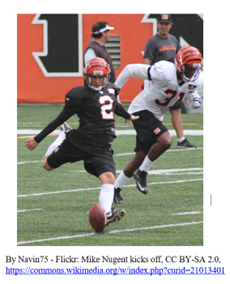 #3. And when it comes to kicking, you’ll find Mike Nugent at the top of all the lists. Some of his records include. . . 1. Mike kicked his way to 120 points in 2002. Think of how many field goals and extra points he had to kick to get there. It’s only been passed 4 times since he graduated in 2004. 2. He still holds the kicking record for college career points (356) 3. Made field goals (72) 4. Mike’s career field goal percentage (81.8%) 5. The number of 50-yard field goals in one season (5) for his career (80) 6. He holds the top two spots for field goals (25 in 2002 and 24 in 2004) 7. He made 24 field goals in a row between 2001 and 2002. 8. He became the second Buckeye to kick 5 field goals in one game. 9. Then he tied the record for perfect games in 2004 at North Carolina State. Mike made 9 perfect kicks, and 8 of them were from at least 50 yards away. Incredible! No wonder Mike played in the NFL from 2005 until 2020. Bonus Source: Mike Nugent Stats | The Football Database (footballdb.com) Game Day Saturday, November 18 - Conclusions from Ray Walker and Me Ray Walker started his conclusions with congratulations – for making it through all 12 chapters. Yay, I did that! He also said if he’d done his job well, that I’d be filled to the brim with new facts. Sorry, Ray. There was just too much information for me to absorb and retain. But Ray did give me a lot of behind-the-scenes stories. I loved reading them, but I wish I could remember them ☹. Ray also said his questions, answers, and stories were meant for readers to enjoy. I liked guessing the answers, but his questions, they were HARD! I even tested myself on name recognition, an extra challenge that I never quite rose to. The hardest part of all was the range of questions. It covered ALL of Buckeye History. I know a lot, from the mid-60’s to the mid-80’s. Then my kids came along, and I lost track of my Buckeyes. I returned in the 90’s thru today. That’s a wide range of sports history to retain, and I didn’t do as well as I thought I would. But I did end up with the fun and Buckeye pride Ray wanted readers to have. I found it when I picked 3 stories from each chapter to write about. Now I’m even more amazed by what my Buckeyes have accomplished throughout my lifetime, and beyond. For my pick-3’s, I always go hunting for pictures, and it’s a trip down memory lane whether I find a picture from their OSU days, or from later on. Then I take Ray’s stories and give them a Rinda-spin . . . by adding in my memories. Meet the Quarterbacks: (Chapter 3 – Calling the Signals) I know each and every one of these names, except for Les Horvath. He was before my time. Rex Kerns is the first one I remember, but I can only recall hearing his name on TV in the ’60s. Art Schlichter is the quarterback from my college years, the ’70s. He had his ups and downs over the years, but the important thing about him – he was a Buckeye. Craig Krenzel was playing when my baby sister was in college, the ’90s. Would you believe he went to the same church she did after they both graduated? She was impressed by his behavior. He acted like everyone else. He was just one of the church faithful, not a star quarterback. Game Day Saturday, November 25 - Memories from 2 Years of OSU Triv Today was THE GAME – the one with Michigan. They won the last 2 years, but I was hoping today would break the pattern. It didn’t ☹ Michigan won again, but only by 6 points. It could have swung the other way, but it didn’t ☹ My question from last week’s post – the one I still remembered after 2 years of trivia – What charm do OSU players get if they beat Michigan? Gold Pants! It makes me sad this is another year without that charm for my favorite team. The Story: In 1934 OSU hired Francis Schmidt as head coach. When the local media got a chance to ask about that team up north, Schmidt said, “They put their pants on one leg at a time, just like the rest of us.” That’s when two Columbus businessmen formed the ‘Gold Pants Club.’ They created gold lapel pins, shaped like football pants. Each player and coach on that winning team gets a gold pin, engraved with their initials, game date, and the score. What kind of trenches do football games have? The one between the offensive and defensive lines. They’re manned by lineman. The offensive ones fight to keep the quarterback safe, and he fights to gain yards/first downs/touchdowns for the team. He can either hand off the ball to a running back or throw it to one of the receivers. The defensive lineman fight to stop the quarterback. If they sack him, he loses yardage. If they stop the running backs, the offense might not get that all important first down. As for those receivers, there are also defensive backs who do whatever they can, within the rules (and sometimes outside them too) to stop the play. If they intercept the ball, that’s even better. It’s the only way a defensive player can EVER score a touchdown. Last year the linemen failed in THE GAME, but they tightened their lines, and the Buckeyes almost beat the #1 team/national champion – Georgia. I was so proud of those linemen. This year they were just as tough. OSU and Michigan were well matched, even with a brand-new quarterback. Kyle threw 2 interceptions, 1 near the beginning of the game. A defender caught it, and it gave Michigan a touchdown. The 2nd was the last play. Another defender caught it, and the clock ran out. The Buckeyes lost by 6 points – the cost of that 1st interception. Many of us think the Michigan pass/touchdown, was actually intercepted. This time by the Buckeyes, but the referees refused to change the call. Oh well, there’s always next year . . . See you at one of the New Year’s bowls! My team is sure to accept an invitation to one of them 😊 Game Day Friday, December 29 - Final Memories from 2 Years of OSU Triva Last night was the Cotton Bowl, the last game of the 2023 season. So many changes have happened since the Michigan game. Our starting quarterback left through the transfer portal. Other players did too, or they declared for the NFL like Marvin Harrison Jr did. I miss the old days when the players finished the WHOLE season. The Cotton Bowl didn’t end the way I hoped, but there were some bright spots . . . the defensive line was excellent. Our second-string quarterback gave his all and tried to play past an injury, but he wound up back on the sidelines. A third-stringer who’d only thrown 5 passes wound up leading the team, in a Bowl game. Incredible! The last time that happened was with Cardale Jones. He led the Buckeyes to a national championship. Here’s to the future, whatever it brings. Life is never dull when you’re a Buckeye! The last trivia question is from Chapter 4 – Between the Tackles, where the running backs rule. #5. Eddie George and Ezekiel Elliott are tied in the record books with the most 200-yard games for the Buckeyes, with how many? 5 4 3 2 The answer . . . 5 games. Both Eddie and Ezekiel had 5 games with over 200 yards. 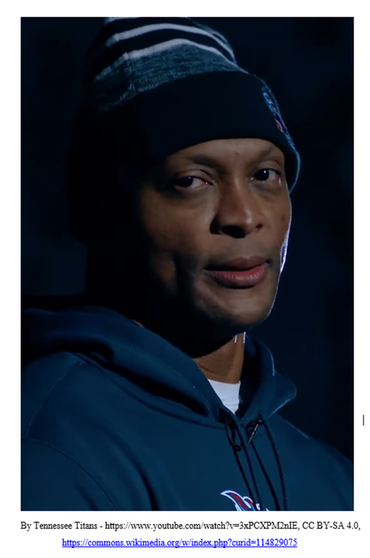 So where are they now? Eddie retired in 2006. He played for the Houston Oilers, who became the Tennessee Titans. Then he went to the Dallas Cowboys. Over his 9 years in the NFL, he rushed for 10,441 yards and scored 68 touchdowns. That’s 408 points he put on the scoreboard. Eddie was NFL Offensive Rookie of the Year in 1995 and a four-time Pro Bowler. The Titans retired Eddie’s #27, which is a huge honor, and he’s a member of the College Football Hall of Fame. After Eddie retired, he went back to OSU to get his bachelor’s degree in landscape architecture. He earned his master’s degree in Management at Northwestern. Eddie hasn’t left football completely behind . . . he was named head coach at Tennessee State in April of 2021, and this is him in 2022. Bonus Source: Ohio State's Eddie George Named Pro Football Hall Of Fame Semifinalist - Sports Illustrated Ohio State Buckeyes News, Analysis and More  As for Ezekiel, he’s still playing. He started with the Dallas Cowboys in 2016. He was an instant star. He was the NFL’s top rusher as a rookie, and players ranked him at #7 in the NFL’s Top 100 Players of 2017. Not bad for a beginner! Ezekiel remained a Top 100 Player for the next 3 years, through 2020. He played for the Cowboys for 6 years, through the end of the 2022 season. In 2021 Ezekiel began dealing with knee and ankle injuries, including a torn ligament in his knee during Week 4, but he refused to sit on the sidelines. He’d play one last season as a Cowboy before they released him in March of 2023. Ezekiel signed a one-year contract with a new team in August, the New England Patriots. He ran third down and red zone plays behind one of the starters. I don’t know where he’ll land in 2024, but I wish him well as a running back, and in life after football. I hope the best is yet to come for him. Bonus Source: Ezekiel Elliott - Wikipedia I’ve been wanting to write this post since the night I got home from the Northern Ohio SCBWI conference, but somehow life got in the way. Post after post came up, and they needed to go first. Now it’s November 20, and I’m finally going to write this post all the way to the finish, I hope 😊 Part 1 – Critique Guidance: I took part of my middle grade novel to the Cleveland conference, and I had an author/agent take a look at the first ten pages from Chapters 1 and 2. She gave me a lot of great advice – like what didn’t make sense to her (I only had 1 or 2 spots – Yay!) She also pointed out places where I needed to push up the writing. How? There was one place I remember where she wanted more historical detail. I wrote about the green tablecloths at the Pennsylvania State House. She wanted to know what kind, so I googled colonial tablecloths . . . I found many were made from damask. If you’re not sure what it is, it’s a woven fabric with a pattern you can see on both sides of the cloth. It’s mostly used in table linen and upholstery, and it was used in colonial times. There were a lot more places where she wanted me to show emotion. I went back and labeled each paragraph with a feeling like happy or sad. I have a writers’ book that’s set up according to emotions, and it has a list of ways that people show it in their faces, in their body language, and by their reactions. I picked one for each paragraph, and then went back to edit them in. I’m still polishing. I’m on my 14th revision of chapter 1, but it’s worth the time to get it right. If an agent or an editor isn’t engaged by that first chapter, they’ll stop reading. Then they’ll send an email that says thanks, but no thanks. I know – I’ve gotten a lot of those over the years ☹ 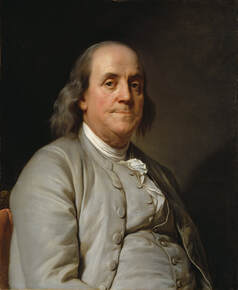 Part 2 – New Chapters – Where I Am Now: In September before the conference, I just finished Chapter 13. It’s now November 22, and I’m stuck on Chapter 17. I was on it last week too. I got stuck trying to find my way in. Once I write the 1st paragraph or 2, I’m on my way. Whenever I start a new chapter, I find 3 sources of information on a founder. I copy all 3 articles, along with their sources. I save them in a file with the notes for that chapter. Then I go to the actual chapter, and I paste in the 1st article, the whole thing. With the 2nd source, I cut and paste it where it fits in the timeline of the original article. I do the same for the 3rd one. Because of this, all the facts about Ben as a printer are together in my timeline. The same is true for his time in the Continental Congress, and so on. The best part about this ‘lengthy’ procedure, it tells me which facts I can use . . . I can find them in 2 or 3 sources. If it’s only in 1 article, I don’t use it. BTW – I did that last week. 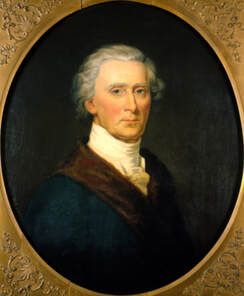 I also researched my main character, Charles Carroll of Carollton. For Charley, I only needed to find out what he and his family were doing in 1789/90. Ben died in April of 1790, and I figured that out last week too. I also needed to know what was going on in America in 1789/90, and yes, I did that last week too. I knew the first US Congress started meeting in 1789 in Federal Hall in New York City. I had a list of bills President Washington signed into law, and I saved my sources, for future reference. With all that, I still couldn’t find my way in. This morning - Ureka! I found it. I could always picture Charley at Federal Hall, but I couldn’t picture how he found out how his friend died – what was going on at that moment, in a historical fiction kind of way. Today I looked at 2 bills Congress passed in April of 1790. Bingo! Now I can picture how he might have learned about it. 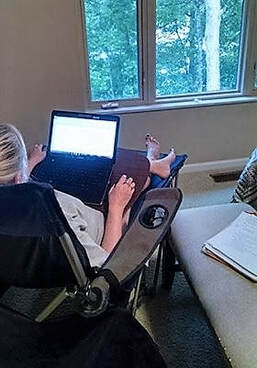 It’s late, so I’ll wait until tomorrow or Friday to write those 1st paragraphs. Once I get going, I let the story take me where it wants to go. Sometimes I take the wrong path. Then I reread until I reach the point where I left the right path and took the wrong one. I delete that section, go back, and rewrite it. Usually it takes me 2-3 days to write and revise a new chapter. Why? It doesn’t have to be perfect. I have one chance with my new chapter and my Friday critique group. Then I have to move onto #18 for next Friday, if I want to finish all 57 chapters by the end of the summer. Fingers crossed – may the force be with me!  Part 3 – My Goals for December: Starting next week, I’ll be part of 3 critique groups. One meets every Friday. Another meets on Tuesdays at least once a month, maybe twice if I’m lucky. I have a third that meets on Wednesday once, sometimes twice a month. My goal is to have one new chapter critique-ready for each meeting. My Friday goal will be the hardest one to reach. I have to finish a chapter a week, and I only get one chance to get it done. That means by the end of the month, I’ll be sharing chapter 22 on December 29th. There’s no room for revision. I take my Friday critique notes, add them to the chapter, and move onto the next one. I’ve been on chapter 17 for 2 weeks. That’s how long it took to write the first paragraph. It seems to happen whenever I move to a new setting. It’s harder for me to find my way in. If that happens again, I’ll fall short of 22.  The Wednesday group is now my polishing group. It’s the opposite of Friday. We’ll meet once or twice this month. I’m on my 14th revision of chapter 1, and my Wednesday friends have looked at this piece 5 or 6 times. My goal –to finish it, I hope, then polish chapter 2. My Wednesday group, they have a great eye for detail. They won’t let me call it polished until it’s just right, like a bullseye on a target.  My Tuesday group is BRAND-NEW! We’ll have our 1st meeting next Tuesday. We might meet again in December, or we might not. I have chapter 2 almost ready for them. I might start working on chapter 3, but only if my Wednesday group says 1 is done. If not, I’ll have them take another look at chapter 2. The most important thing this month – polish chapter 1. The second – to reach chapter 22. May the force be with me 😊  Part 1: It was Saturday, and I was video-taping a read-aloud on Zoom. I finished my book, and I went to listen to it, to save it . . . but IT wasn’t there! There was no link. I couldn’t listen. I couldn’t save it or load it into my Meta planner. So . . . I tried again. I video-taped. I went to listen, AND I got the same result! No link! I was dead in the water. It was 3:30 Saturday afternoon, and I didn’t have a video to put up for my 4:00 deadline. So . . . what did I do? Well, I didn’t panic. I thought about solutions, what CAN I do? I needed a video of me reading a book. Obviously, I couldn’t read the one I’d planned. That’s the moment when I realized I have a treasure chest of read-alouds saved in my computer. I have 78 titles! All I had to do – pick one. 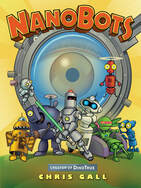 That was easy! I wrote about technophobia, and I could have had a really bad case of it that Saturday afternoon, or I could use it. I decided right then and there to use it as Sunday’s Vlog. For Saturday, I already had a picture book to match . . . Nanobots. It was perfect, and it was an easy fix, but it wasn’t the end of this story.  Part 2: What Next? On Saturday I scheduled the vlog that matched NanoBots right after the read-aloud appeared. The title, Technophobia – It’s for Real! And that Sunday it was far too real, again. I went in like usual at 4PM to find my vlog. Time to post it across social media . . . But it wasn’t there – the video had an error and wouldn’t play. My heart raced as I tried to figure out what to do. I thought for a moment. Then I pulled the error down and put up the video from my computer again. I hoped it would work, but I didn’t know for sure, so I posted notices on social media that the video would be up soon. It was! By the time I finished my second notice, the video was up and running. I posted the links for it and deleted the notices. By 4:30 my vlog problem was over. But I hadn’t figured out the Zoom issue that started my problem in the first place.  Part 3: Remember my original issue? That I couldn’t videotape on Zoom – well, it got worse. I couldn’t even open a meeting, and that’s a problem. Every Friday I host my critique partners on my Zoom account. We’re all over the country . . . from New York to Connecticut, from Ohio to Tennessee to California. It was Monday so I wasn’t really worried. I thought I could work things out. I opened a meeting, then recorded another. I thought the problem was fixed. Nope! By midnight on Monday, I had six security alerts from our Aura protection system, and I’m not a techie. YIKES! My husband was out of state so I texted him late that night for advice. His answer Tuesday morning, call Aura. I did. I was on hold forever. OK, it was more like 2 hours. They explained that Zoom and Aura were butting heads, and they gave me a work around. I tried, but it failed like everything else. I still had the same problem, and more security alerts.  So, I reached out to Zoom. I have a free account that I’ve used for over 2 years. I’ve never had a problem, until that Saturday. I tried calling, but they don’t answer phone calls from customers like me. I tried putting in a ticket for tech help, but they don’t answer tickets like mine. They did send me an email with ten links to try out. YUCK! Who knows what kind of an answer I’d get, and when? I knew where the problem was – with Zoom’s executive command. Whenever an error message popped up, that’s what it said. I tried deleting my old account, then adding new ones. Zoom worked right away when I downloaded it, but stopped whenever I clicked out and tried to return again. The problem – that darn executive command. No matter what I did, Zoom refused to open, or it deleted itself from my home screen. By now I’d spent most of Tuesday trying to solve my problem, and I was no closer to solving it. URGH!!!  Part 4: Late Tuesday I messaged my husband about my frustrations. I thought I was dead in the water with Zoom for another week, but he surprised me and drove home Wednesday.  Would you believe he had the problem fixed in under an hour? The solution – He clicked on the error messages, then on ignore, and the problem disappeared. I couldn’t believe how quickly he fixed it, especially after I waited most of Tuesday for tech help. My hero!  PS – I thought my computer troubles were over. Almost! I forgot to bring my power cord to a writing conference., but all’s well that ends well. My critique group exchanged notes using email instead of meeting on Zoom, and I cut my computer time way back. The silver lining – I took a break from writing. It turns out that taking time off is a good thing. It rejuvenates you, gives you a fresh take on your work, and it’s fun. 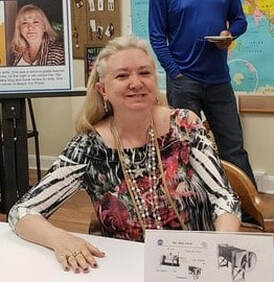 Growing up, I never thought of myself as being creative. I was a worker bee. I loved getting things done, and I still do. But when I started writing, I began to recognize that I have an imagination, that I connect the dots differently than other people do. As I started writing I began to create more things than I ever imagined. This post is all about those things. It’s also a call to you – to recognize your own creativity, that you see the world differently from anyone else. The things I create most days of the week . . . #1. My Blog – I wrote the first one back in November of 2016. It was about swimming with dolphins. That was even the title. I thought I knew what I wanted to write, but it bombed. It didn’t work out the way I planned. Reality showed me what really worked. Link: http://www.rindabeach.com/blog/archives/11-2016 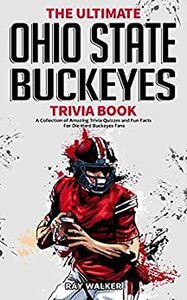 This is the one I wrote last night about OSU football trivia. I started the original post last year, but now I’m into my second season. Over the last seven years, I’ve written over 445 posts. If you compare the first to the last, I’ve changed a lot as a writer since 2016. Link: http://www.rindabeach.com/blog/trivial-pursuit-the-ohio-state-football-way-season-2 The things I create once a week . . . (There are six of them.) #2. My Reads – Once a week when my blog is done, I pick a book to share. In the early days, they didn’t match. I just picked a book I loved from my local library and reviewed it. Sometimes I pick picture books. Sometimes chapter books. I post them on my website under the button, My Reads, and I also post it on Amazon. Did you know whenever you review a book online, it helps the author, the illustrator, and the publisher. It’s a great thing to do! Fandango Stew was the first picture book I reviewed back in October of 2016. Think Stone Soup, but Tex Mex style. Link: http://www.rindabeach.com/my-reads/fandango-stew-review Stick and Stone is the last picture book I reviewed this September. It’s about two opposites who discover that a common enemy can turn them into friends. Would you believe I’ve done over 235 picture book reviews in the last 7 years? Link: http://www.rindabeach.com/my-reads/review-of-stick-and-stone The Extincts was the first chapter book I reviewed back in September of 2016. I still remember it! It was that good! Imagine getting a job at a farm that specializes in extinct animals. I HAD to read it! Link: http://www.rindabeach.com/my-reads/review-of The Peddler of Wisdom is the last chapter book I reviewed back in July. I read it a few years ago,, and it finally matched one of my blogs. Imagine traveling back in time to 17th century France, AND you meet the ultimate fortune teller, Nostradamus. Would you believe I’ve done over 106 chapter book reviews in the last 7 years? Link: http://www.rindabeach.com/my-reads/review-of-the-peddler-of-wisdom #3. Vlogs – Once a week I take a blog and turn it into a video. Behind the scenes, I write and revise a script, make the slides, and finally practice and record the video. I post it on social media every Sunday at 4PM. You’ll find it on Facebook, Instagram, and X, but not on my web site. The first screenshot is from my first vlog. I recorded it back in May of 2021. It’s about the things I remember from visiting the Madison’s house in Virginia. I shared two links – the video and the original blog. Video: https://fb.watch/5PUG1rUGDC/ Blog: http://www.rindabeach.com/blog/the-things-i-remember-from-my-visit-with-james-and-dolly-madison The second is from last weekend. It started when I heard a song in an Amazon Prime ad, Always Something There to Remind Me. I did some research, and then I shared its story. Here are its links: Video: https://www.facebook.com/watch/?v=264622939816322 Blog: http://www.rindabeach.com/blog/always-something-there-to-remind-me #4. Saturday Reads– I also look for a picture book that goes along with my vlog. I write and revise a script. Then I practice and record it. Every Saturday at 4PM I post it on Facebook, Instagram, and X . Sorry, but it’s not on my web site. I did my first read-aloud in November of 2021. I used a real book, but I didn’t like the way it looked. I shared the screen with it, but the book should fill it, not me. The title – Twenty-One Steps. It’s about the Tomb of the Unknown Soldier in Washington D.C. If you’d like to see my first try at reading online, try this link: Video: https://www.facebook.com/BeachGirlPress/videos/677802673204597 I did the second one last weekend. I use eBooks now because the book fills the screen. I’m tiny, except for the beginning and the end. I picked Lupe Lopez – Rock Star Rules. It’s about the first day of school, when a Kindergarten drummer meets her new teacher. Oh, no! Link: https://www.facebook.com/watch/?v=332318882605065 #5. Your Newsletter– I work on one newsletter over the course of a week until it’s ready to publish. This is the original I started with. I would cut and paste it into an email. It looked great with its words and illustrations, but it was a real pain to set up. I moved on . . . I sent the letter as an attachment, and I didn’t have to reformat anything, but I ran into another problem. Some addresses have programs that won’t accept attachments for security reasons. Don’t worry! I still use this form. It’s my writing template for my blogs and book reviews. I write and revise here before I post anything online. It has served me well for seven years. 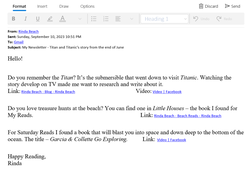 This is the newsletter form I use now. It’s not pretty, but it’s easy to glance and find the links you’d like to check out. I’ll stay with it, until I find a better way to serve my subscribers. #6. Pinterest– While I’m working on my newsletter, that’s when I add new posts to Pinterest. If you’re looking for specific content that I’ve written, this is a great way to find it. I have boards set up by curriculum content and standards. Half the boards are science. They include Earth/Space, Life, and Physical Science. The other half are social studies. They include Economy, Geography, Government, and History. Three boards are for language arts. One is actually named that. It’s where I put posts about reading and writing. The other two boards are named Classroom Reads. One is for picture books, and the other is for chapter books. Each of the ten boards are subdivided into topics and standards. I hope they help you find what you’re looking for. 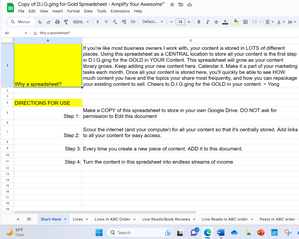 #7. Google Spreadsheets– I add new posts to my spreadsheets while I’m working on my newsletter. You’ll never see it – it’s just for me. It’s how I track my content. I add each blog, book review, and video so I can find it and use it again. And you can use it too. How? If you’re looking for something for your classroom or for your child, email me. I’ll use a key word to see if I can find what you’re looking for. If I do, I’ll send you the link. If I don’t, I might decide to write a post, just for you. The things I create and hope will be published, someday . . . #8. My Unpublished Manuscripts – I have eleven manuscripts stashed away in my computer . Someday I hope they’ll be published traditionally. I listed them below in the order they were created. I have two manuscripts featuring bats. The first is awful. I dragged in Herman the German, and the second is a chapter book that combines fantasy with what really happened with my bat. Someone suggested a third version, a middle grade fantasy, but it’s in the idea stage for now. None of my bat stories are ready for submission. I wrote about ants next. It started as a chapter book and somehow morphed into a middle grade novel. It’s gone through three rounds of revision, and I’ve sent it out on a few queries, but nothing yet – maybe someday 😊 My dog story came next. I started with what really happened, but it didn’t work so I fictionalized it to move the story. It started and stayed a picture book, but it’s my least successful manuscript. Something’s missing, but I haven’t figured out what . . . yet. My safety story started as an idea for a chapter book, but it became a picture book. It’s been sent on many queries, but it really needs the right publisher to take it on, and I believe in my heart someday that will happen. The duck manuscript is done, but it needs the right publisher to take a chance on it . . . so it’s still waiting in the wings of my computer. My nativity story is also done. I’ll share it after I query an agent. You submit one story for consideration. If they like it, you need two or three others ready to share. An agent must know if they can afford to take a chance on you. I have a manuscript about a new baby. It’s only 100 words. I’m hoping someday it will become a board book. It’s agent- ready whenever I get that request for more work. Would you believe I have a story about a blue poison dart frog? It’s the one I’m submitting whenever I query. It’s my strongest manuscript, and I hope it nets me an agent . . . someday😊 The next two stories are WIP’s. That’s writer-speak for Works In Progress. The first is about community helpers. I started. Then I had to stop to work on the next idea. I’m writing a middle grade novel about the founding fathers. It’s historical fiction, but it still demands tons of research. It will be 57 chapters long. So far I’ve drafted 13 and polished the first three. My goal is to polish the first 50 pages, then submit it to agents and publishers. My fingers are crossed it will find a good home. #9. My Published Books – I have three published books. They’re not sitting in my computer . . . they’re on Amazon and in local bookstores. It’s lovely when your writing turns into a real book. Neil came first in 2019. He’s in a chapter book that’s all about his first dream . . . to build a wind tunnel like the Wright Brothers. (For grades 2 - 4)
Lake Fun came out in 2020, and Zoe in 2021. They both allow kids to read a story, then journal about their own experiences. Zoe is a chapter book, and Lake Fun is a picture book. (For grades 2- 4) 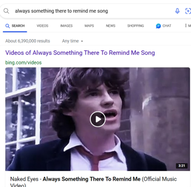 Do you recognize this song title? I started another post with that same question. Last time I asked, it was about an Amazon Prime Ad. The song playing in the background, Say a Little Prayer for You. Here’s the link for that post: Link: http://www.rindabeach.com/blog/say-a-little-prayer-for-me Well, it’s back! The commercial, that is. It features the same young couple that broke up. They forgot once again, that they share an Amazon Prime account. The song changed, but the directors picked another one, from the same old songwriting team, Always Something There to Remind Me. Part 1 – Songwriting and a Demo: Do you remember this song? If not, google it, pick an artist, and give it a listen. Or, you could wait for the Amazon ad to come on. Just like the other ad, Amazon picked another song written by the songwriting team of Burt Bacharach and Hal David. They decided they needed a demo to sell it to a record company back in 1963. Can you guess who they picked to record it? 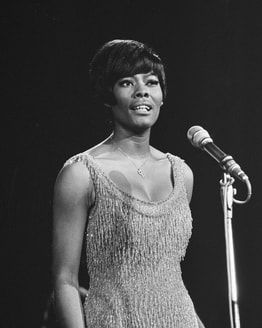 This is Dionne Warwick in 1966. She was a star! But back in 1962, she wasn’t. She was singing background, and Burt noticed her voice. He asked if she’d be interested in recording demos (demonstration recordings). He needed them to pitch his songs to record labels. He offered her $12.50 per session. In 2022 money that was $120. Dionne took it! I would too! It was a perfect fit for both of them. Dionne got record executives to listen to her voice, and Burt got a singer whose talent allowed him to compose the kind of challenging tunes he wanted to write. Dionne was so good at understanding what Burt wanted, she could usually record a song in 1-3 takes. That’s fast! If a song took 3 minutes to sing, Dionne would knock it out in 3 to 9 minutes. Impressive, AND cost effective for Burtt! And no matter how long it took, Dionne still got her $12.50 per session. Burt and Hal sold the song. It was covered by five other artists from 1963 until 1995. But when I remember it, I hear Dionne’s voice in my head. She has a style all her own. Part 2 – The Five Artists Who Covered This Song: After Dionne recorded the demo for Always Something There to Remind Me, five other artists and their record companies picked it up. I checked. Dionne never had a Top 40 hit with this song. 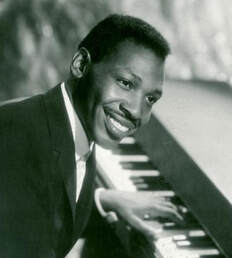 1. Meet Lou Johnson. His version of Always Something There to Remind Me reached #49 on the Billboard Hot 100 during the summer of 1964. He sang soul, played piano, and was a recording artist during the 1960s and 70s. 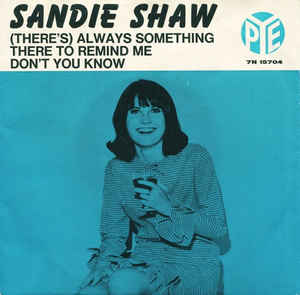 2. Sandie Shaw found the song thanks to Lou. Someone heard his version and sent it to her. She released hers in September of 1964 and got it on a pop music TV show in the United Kingdom. It worked! Sandie took it to #1 in the UK that year. She also released it around the world, and it was a top hit everywhere, except in the United States. Lou Johnson hung onto his #49, and Sandie only made it to #52.  3. The next version didn’t come out until February of 1970. The singer, R. B. Greaves. I’m sorry. I don’t have a photo of him, or of his album, but his version did better than Lou’s or Sandie’s. It reached #27 on the US Top 40 and #3 on the US Easy Listening charts. 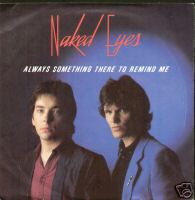 4. Fast forward to 1983, and Always Something There to Remind Me appeared again, 20 years after it was written. Peter Byrne and Rob Fisher recorded it in a group of demos that landed them a recording contract. Their name – Naked Eyes. Their version peaked at #8 in the Billboard Hot 100. Pretty good for an old song! 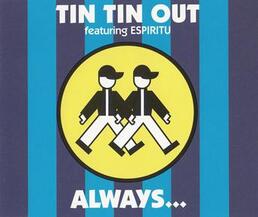 5. The last hit so far, came out in 1995. That’s when Tin Tin Out, an electronic music duo, recorded their version of this old hit. It went to #14 on the UK Singles Chart and #1 on their Dance Chart. That makes this song a classic! Over all those years, with all those artists who recorded their song, do you know who got paid for every single version? The songwriters! Burt Bacharach and Hal David own the copyright to the song, and every time someone records or plays it, Burt and Hal get paid in royalties. That means money! And when Amazon used the song on their commercial, they had to pay too. Burt and Hal are both dead, but their royalties still get paid to their estates and to their families. It pays to be a creator! Photo Sources:
1. Burt in 1972 - By ABC Television - eBay itemphoto frontphoto back, Public Domain, https://commons.wikimedia.org/w/index.php?curid=18250433 2. Burt in 2013 - By Phil Guest from Bournemouth, UK - Burt Bacharach, CC BY-SA 2.0, https://commons.wikimedia.org/w/index.php?curid=79102167 3. Hal in 2011 - By Pat Padua - https://www.flickr.com/photos/ppad/5713457890/, CC BY 2.0, https://commons.wikimedia.org/w/index.php?curid=29999116 4. Dionne in 1966 – By Anefo - http://proxy.handle.net/10648/aaff1fba-d0b4-102d-bcf8-003048976d84, CC0, https://commons.wikimedia.org/w/index.php?curid=65537939 5. Lou Johnson - By John E. Reed - Original publication: UnknownImmediate source: http://indeepmusicarchive.net/wp-content/uploads/2015/11/Lou-Johnson-At-the-piano-BW-Pic.jpg, Fair use, https://en.wikipedia.org/w/index.php?curid=73213794 6. Sandie Shaw - By Pye Records - Discogs, Fair use, https://en.wikipedia.org/w/index.php?curid=56938537 7. Naked Eyes - By The single can or could be obtained from its said copyright holders., Fair use, https://en.wikipedia.org/w/index.php?curid=10831799 8. Tin Tin Out - By Tin Tin Out featuring Espiritu - https://www.discogs.com, Fair use, https://en.wikipedia.org/w/index.php?curid=57077352 Information Source: (There's) Always Something There to Remind Me - Wikipedia  This post started with a search link that was supposed to find the most popular song on the day you were born. When I finally checked, it stopped working. Bummer! But I didn’t quit. I used the search bar to ask, “What was the #1 song in May of 1959?” It worked! Follow me back in time, and I’ll share the play list of my life. Part 1 – From Birth to Graduation: These three songs were popular in May of 1959. That’s the month I was born. I didn’t recognize the titles, but when I played them, I remembered two – the first and the last. My sympathies to the one in the middle – I didn’t remember it at all. Fast forward to May of 1977. That’s when I graduated from Wapakoneta Senior High, and these were the songs I listened to on the radio. I had to look up two but recognized them right away. My favorites – Don’t Leave Me This Way, Southern Nights, Sir Duke, and I’m Your Boogie Man. They all made my toes tap. Fast forward to May/June of 1981. It was time for another graduation. I’d finished college and graduated from The Ohio State University. I remember every single song, and my favorites have a beat you can dance to – Rapture, Kiss on My List, Morning Train, and Stars on 45 Medley. Part 2 – A Family Affair: My husband and I got married back in June of 1985. It’s hard to believe that we’ll celebrate our fortieth anniversary in two short years. Looking at both rows of songs, most of them weren’t my favorites. Ballads are OK, but I love dance music. I managed to find three oldies and goodies – We are the World, Everybody Wants to Rule the World (No, I never did), and Sussudio. In May of 1987 I was getting ready to become a new mom. One of my all-time favorite songs was I Knew You Were Waiting because I was waiting, to have a baby boy. I also loved Head to Toe and I Wanna Dance with Somebody. They both made my feet tap, but I was too tired to dance. I had a new baby to take care of. My second baby boy arrived in November of 1989. These songs were on the radio, lots of ballads, but I still found two favorites . . . Miss You Much and Blame It on the Rain. There was another song that became an all-time favorite, but it’s not on this screenshot – Nothing’s Going to Stop Us Now by Starship. It’s how I felt about my new baby boy. In March of 1992 I was waiting on a baby girl. No radio in the car . . . I had Disney songs on tape playing for the kids. This screenshot has a lot of ballads, but these three still found their way into my memory – Black or White, Don’t Let the Sun Go Down on Me, and I’m Too Sexy (It made me laugh). My only wish – that I had a special song for my daughter. Part 3 – My Pursuit of Writing: In June of 2007 I started writing, all because I held a bat on a mop in Germany. That experience made me start, and it took me two years to finish the bat’s story. I was still teaching all week and writing on the weekends. I knew the songs on this screenshot, but they weren’t my favorites. There were other songs I liked better. I finished that bat story in 2009. It was exciting, but I’d pushed it as far as I could with my friends. I needed to find someone who could tell me what was good, and what to work on. I took it to Highlights in July. There was something there, but I had a lot to learn about how to write a children’s book. I checked out two of these song titles, but it turns out I knew them all from the radio. They were OK, but my favorite from 2009 was not even on the list. The title – Just Dance. It figures a song about dance would be my favorite. In 2019 I published my first book, Neil Armstrong’s Wind Tunnel Dream. I decided to write it in 2018. That’s also when I decided to self-publish. It was the only way I could get my story out in time for the 50th anniversary of the moon landing. It’s my bestselling book so far! There was only one song to make it to #1 over the summer of 2019 – Old Town Road. I’d heard of it, but I didn’t recognize the lyrics or the melody. The other song titles were # 1 in the years following 2019. I wish I recognized them too. Have you ever read a Jane Austen book, or seen one in a movie? I’ve loved her novels forever, but I never wondered about Jane. Not until I started reading a series of books by Beth Pattillo. That’s when I looked her up on the internet. Part 1 – Four Portraits: The first Jane is the only portrait of her in existence. Her sister Cassandra started it sometime around 1810, but she never finished it. She used pencil and watercolor. It’s small in size, only 4-1/2 inches x 3-1/8 inches, but you’ll find it in the National Portrait Gallery in London. The second Jane is a watercolor done by James Andrews. Can you tell it’s based on Cassandra’s original sketch? It found its way into A Memoir of Jane Austen that was written by their nephew James Edward Austen-Leigh in 1871. Every other portrait of Jane is based on this one, including the one on the Bank of England’s £10 note. Look below. There's another set of portraits. The first one is a silhouette of Cassandra, Jane’s sister and her best friend. The artist is unknown. The second is a painting Cassandra did in 1804. This time she painted a back view of her sister using watercolors. Interesting – Jane allowed her sister to capture her image from the back, but not from the front. Remember the one Cassandra didn’t finish? Part 2 – Jane’s Childhood Home: This set of pictures came from A Memoir of Jane Austen published by her nephew, James Edward Austen-Leigh, in 1871. Jane’s father was a minister, and this is the parsonage at Steventon where Jane grew up. It’s long gone, but it once sat in a valley surrounded by meadows. The second picture is her father’s church, St. Nicholas in Steventon. Jane attended services from the time she was born in 1775 until her father retired in 1800. You can still visit St. Nicholas, but its name is now Steventon Church.  Photo by Timsaunt - Own work, CC BY-SA 4.0, https://commons.wikimedia.org/w/index.php?curid=85101065 Photo by Timsaunt - Own work, CC BY-SA 4.0, https://commons.wikimedia.org/w/index.php?curid=85101065 The Move to Bath: When her father retired, he moved the family to Bath. Their new address: 4 Sydney Place. It was 50 miles away from Steventon, but it must have felt a world away for Jane. She grew up in a quiet country village, but Bath was a busy city. It drew people from all over England. They came for the mineral water, and for the high society. When her father died unexpectantly in January of 1805, Jane ended her time in Bath. She, Cassandra, and their mother were left without a home or financial resources of their own. They were dependent on the charity of Jane’s brothers. Part 3 – Her Final Two Homes: These two pictures are from Kent. The first is Godmersham Park, the home of Jane’s brother Edward. He was adopted by a wealthy family as their son and heir. Jane started visiting there in 1798. The last time was in 1813. Godmersham Park was her model for great houses like Pemberley and Rosings Park. The second photo is her last real home, perhaps her favorite. Chawton was a cottage on her brother’s land at Godmersham Park. Edward gifted the cottage to his mother and sisters early in 1809. Jane spent the last eight years of her life there. She did her best writing in the country, first at Steventon and later at Chawton. She was a country girl at heart. Jane wrote of her trips to London in books and letters. If you’d like to visit her in Town, click on this link: Jane Austen Goes To London | Guide London Her Final Home and Resting Place: The next set of pictures are from Winchester. The first is a cottage on 8 College Street. Jane had been sick since early 1816, but she refused to give into it, or to stop writing. Her sister Cassandra and brother Henry brought her here for a cure in May of 1817, but it was already too late. Jane died on July 18, 1817. She was only 41 years old. Today her symptoms would have been diagnosed as Addison’s disease or Hodgkins’s lymphoma. The second photo is of Winchester Cathedral. That’s where Jane Austen is buried, not because she’s a famous author. She’s there as the daughter of a clergyman, and the sister of another. That’s what Jane wanted, a private life. When she died, her name wasn’t on her book covers. She was listed as an anonymous lady, the way she’d requested. If you’d like to learn more about Jane Austen, click on this link: Jane Austen - Wikipedia Winchester Cathedral reminds me of a song from 1966. It’s a little quirky, but fun. Here’s the search link. Click, then look for the video, and give it a listen: winchester cathedral song - Search (bing.com) Do you recognize this song? If you don’t, that’s OK. You’re probably too young 😊 It debuted in 1966 when I was 7. I’m much older now ☹ But you might have heard it over the last couple of weeks in a commercial for Amazon Prime. I didn’t notice the ad part. Sorry! I was busy singing along with one of my favorite songs, and now I can’t find the ad information. It was up yesterday, and gone today. Part 1 – Where the Words Started: I Say a Little Prayer started off as an idea in Hal David’s head. He wrote the lyrics to show what a woman was thinking, knowing her guy was far away fighting the Vietnam War. I had no idea when I heard it in the 60’s. I got the woman part, but I never found the soldier in the song. Not until I started researching this post. It puts a whole new spin on Hal’s words. If you’d like to read his lyrics, click on the google search link below. It’s the only way I can share them with you, and follow copyright rules. Scan down the page. Dionne Warwick and Aretha Franklin both covered the song, but the way they used the chorus was a little different. Either way, put yourself in that woman’s shoes, and think about someone you love who’s in harm’s way. Hal did, and he used those words in this song. Search link: https://www.bing.com/search?pglt=673&q=say+a+little+prayer+lyrics&cvid=08df26e952c040c7be4b82faff1ed4d7&aqs=edge.0.0l9.9652j0j1&FORM=ANAB01&PC=LCTS  A Side Note About Vietnam: This is a map from 1954. The war started in 1955, but the US didn’t get involved until 1960. Fifteen years later we got out. It was 1975. I was a baby when it all started and a sophmore in high school when it ended. My husband was a junior. At age 18 boys had to sign up for the Vietnam draft, and at its high point 40,000 young men were picked for military service each month. I hope a prayer was said for each and every one of them. The draft stopped in 1973 because of the huge anti-war movement, but it returned in a new form in July of 1980. Boys had to sign up for Military Selective Services, but they didn’t go to war. My husband never signed up for either draft, but my two sons did, the 1980 way. Map Source: By User: SnowFire - Own work. Based on File: French Indochina Phan Xich Long.svg., CC BY-SA 4.0, https://commons.wikimedia.org/w/index.php?curid=63532416 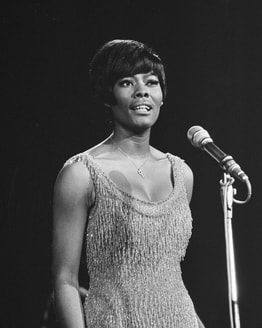 Part 2 – Burt Bacharach and His Mixed-Up Signatures: I didn’t know Burt liked to mix-up the time signatures within his music. I never noticed it, but maybe that’s what gives it that distinctive Bacharach sound. The verses in I Say a Little Prayer start with eight beats in 4/4 time, then a ten-beat section (4/4 + 4/4 + 2/4). Then he finishes the verse with that same eight beat pattern again. When you hit the chorus, Burt sets it up in eleven beats (4/4 + 3/4 + 4/4). If you’re a musician, this makes sense. If you’re not, just keep reading, and enjoy the music link down below. A Recording Session: Dionne Warwick was one of Burt and Hal’s favorite singers, and they wrote this song just for her. She was a quick study when it came to recording. Usually, she recorded a song in three takes, but she often did it in one. Not this time. Dionne tried ten times, but Burt was never really happy with it. He thought it sounded rushed, like the tempo was too fast. Maybe it never quite fit the version in his head. They made that recording on April 9, 1966, and it sat on a shelf for over a year, until September 1967. Florence Greenburg from Scepter Records wanted it on his album, The Windows of the World. Disc Jockeys at radio stations around the country heard it, then played it on the air one short month later. It was so popular Scepter released it as a single on the A side, the hit side of a record. They put The Theme from Valley of the Dolls on the B side. Dionne sang that one too, and both songs were super successful for Scepter. And for Dionne, Burt, and Hal too. It's odd that the fast pace Burt disliked, became a million-selling hit for Dionne. That was a gold record back in the 60’s. It reached #4 on the Billboard Hot 100. And me, I can still sing the chorus. If you’d like to listen to Dionne’s version, click on my search link. If you scan down the page, you’ll find Aretha Franklin has one too. She recorded it in 1968, and it went to #2. Either way, pick a video, and enjoy! Search Link for the music video: say a little prayer for you dionne warwick - Search (bing.com) Tomorrow – How this song from 1967 became part of my favorite movie scene of all time! Photo Sources for Burt and Hal: Burt in 1972 - By ABC Television - eBay itemphoto frontphoto back, Public Domain, https://commons.wikimedia.org/w/index.php?curid=18250433 Burt in 2013 - By Phil Guest from Bournemouth, UK - Burt Bacharach, CC BY-SA 2.0, https://commons.wikimedia.org/w/index.php?curid=79102167 Hal in 2011 - By Pat Padua - https://www.flickr.com/photos/ppad/5713457890/, CC BY 2.0, https://commons.wikimedia.org/w/index.php?curid=29999116 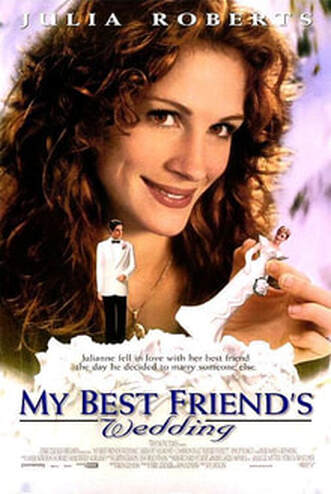 By POV - MovieGoods, Fair use, https://en.wikipedia.org/w/index.php?curid=15363444 By POV - MovieGoods, Fair use, https://en.wikipedia.org/w/index.php?curid=15363444 Part 3 – One of my Favorite Movie Scenes Ever: It’s in My Best Friend’s Wedding from 1997. If you haven’t seen it, you should check it out. It’s funny. It stars Julia Roberts, Dermot Mulroney, Cameron Diaz, and Rupert Everett, but the surprising part is the movie’s soundtrack. It uses five songs from Burt Bacharach and Hal David. Together those things made the movie into one of the best romantic comedies of the 1990’s and beyond. And that favorite scene – it all starts with some kid who has no idea who Dionne Warwick is. If you’re my age you know she’s a singer, but someone at the rehearsal dinner only remembers her because of the Psychic Friends Network. That’s when Rupert Everett begins singing, and he winds up leading the entire restaurant into a rendition of Say a Little Prayer for You. It’s just plain fun! The first time it surprised me, but now every time I watch it, I replay that scene two or three times. It makes me happy! If you’re curious about the Bacharach/David song list, it includes: I Say a Little Prayer for You Wishin’ and Hopin’ What the World Needs Now I’ll Never Fall in Love Again I Just Don’t Know What to Do with Myself If you want to watch that scene, use this search link: say a little prayer my best friend's wedding - Search (bing.com) 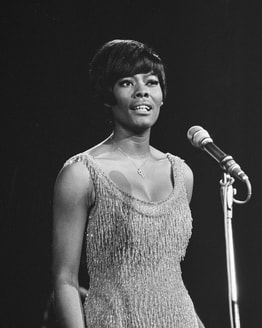 Information Sources Where You Can Learn More: I Say a Little Prayer - Wikipedia My Best Friend's Wedding - Wikipedia The Draft (history.com) Vietnam War - Wikipedia Selective Service Acts | History, Significance, & Facts | Britannica |
AuthorWhen I write, I can only have one voice in my head, mine. A little noise is fine. But too much, or worse yet, WORDS, and I must change rooms or pull out headphones. Then I can write on! Categories
All
|

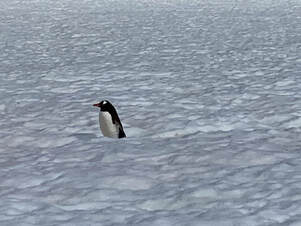
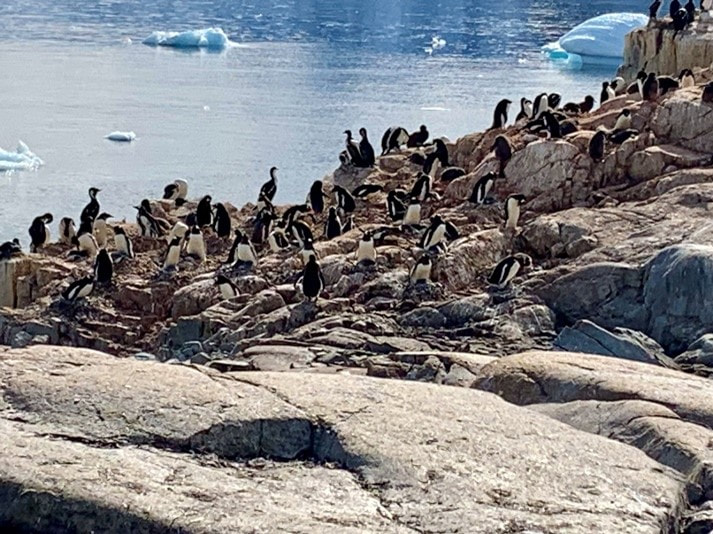
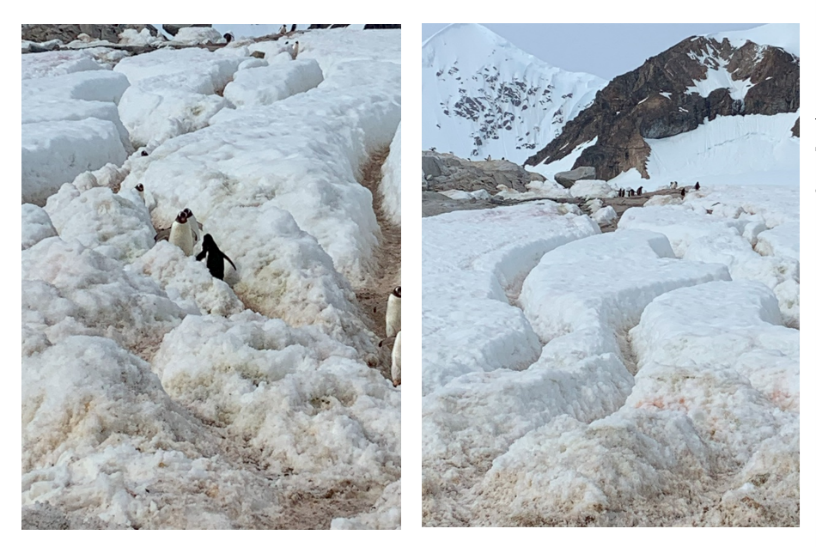
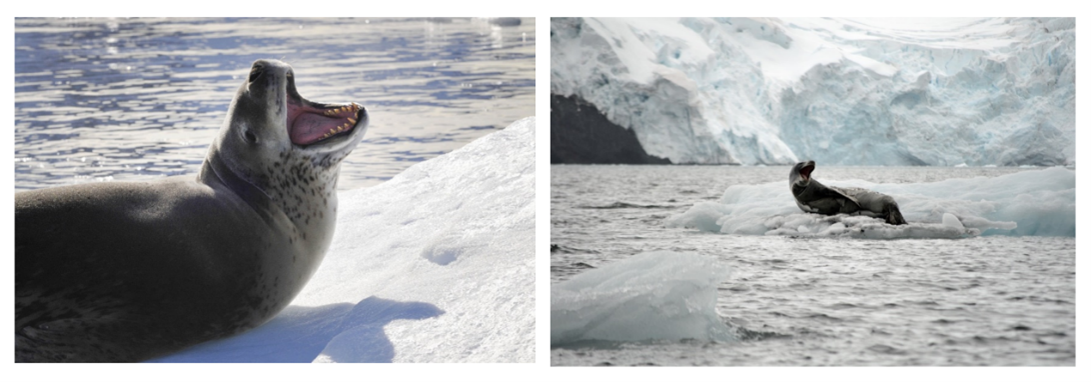


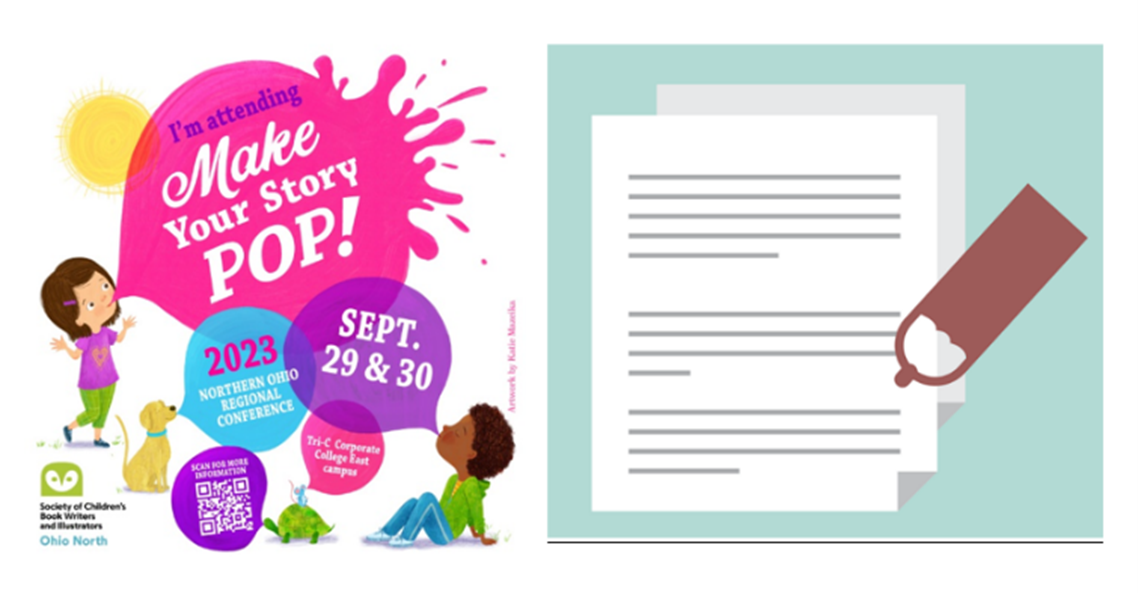
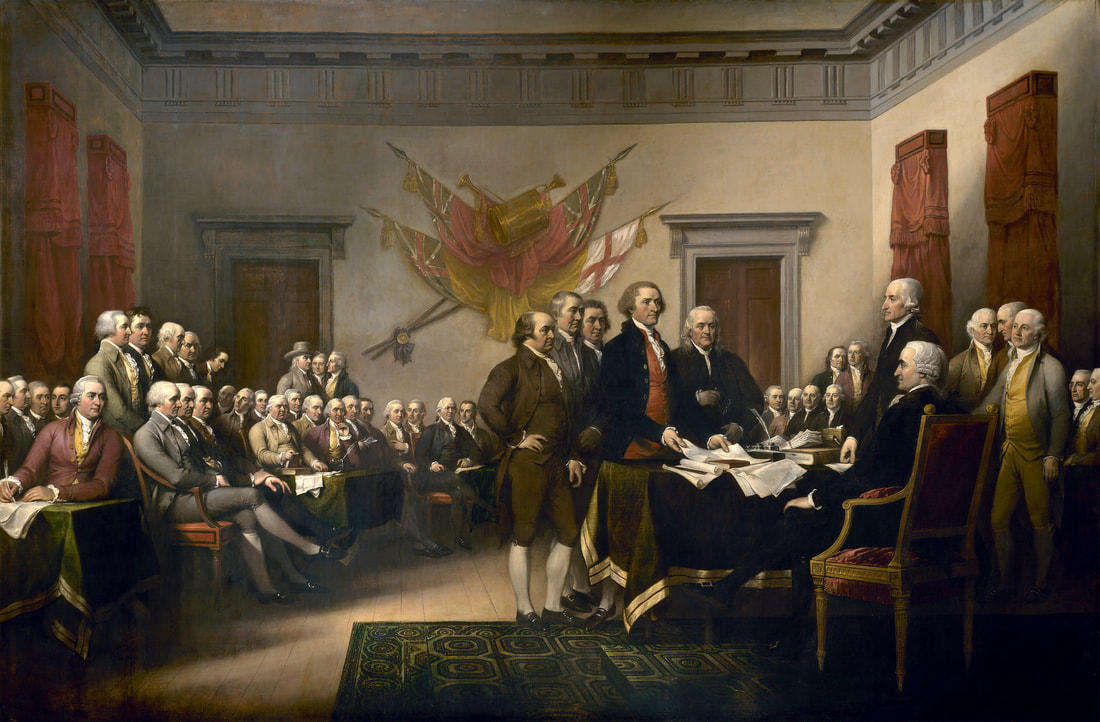

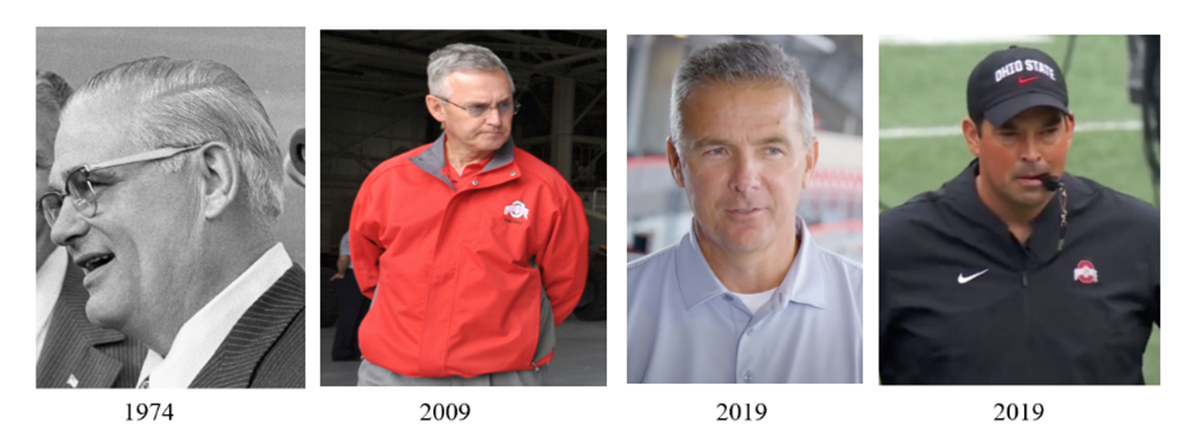
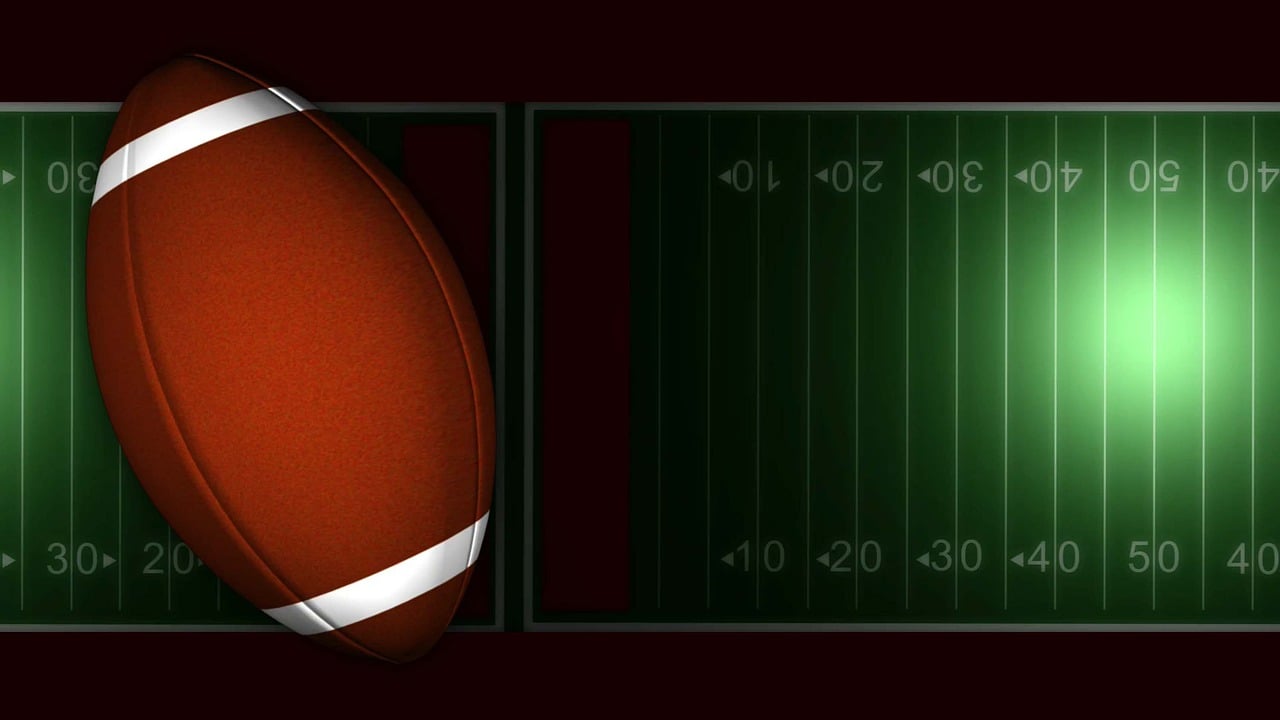
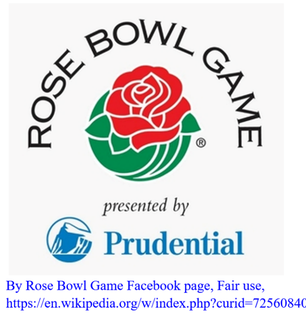

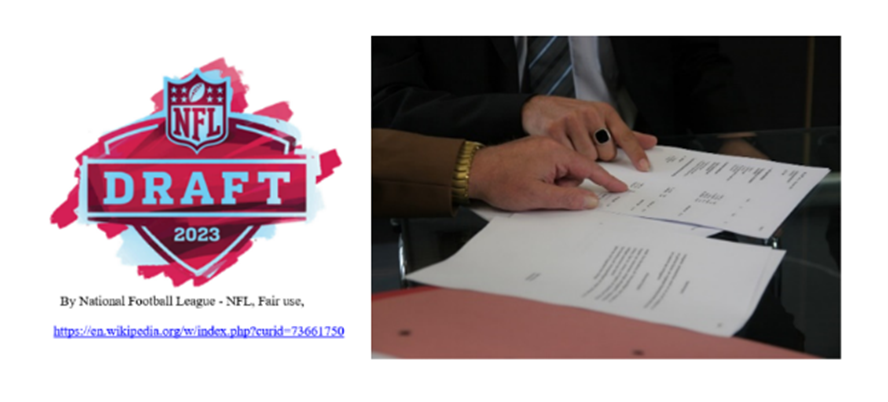



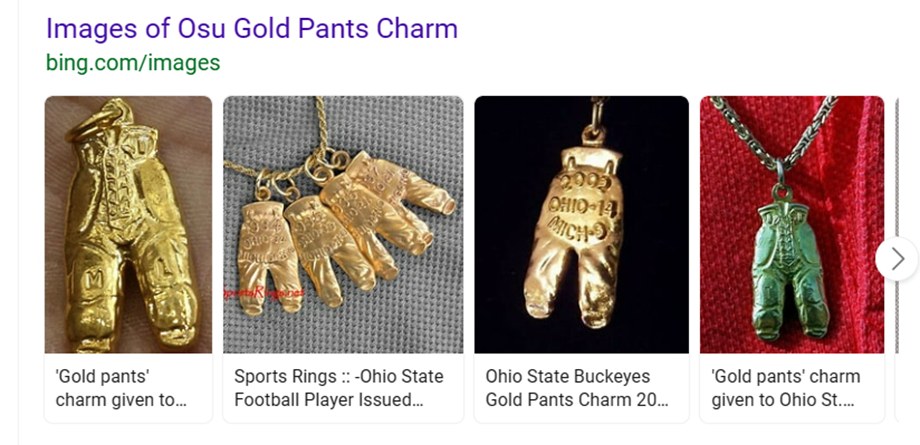
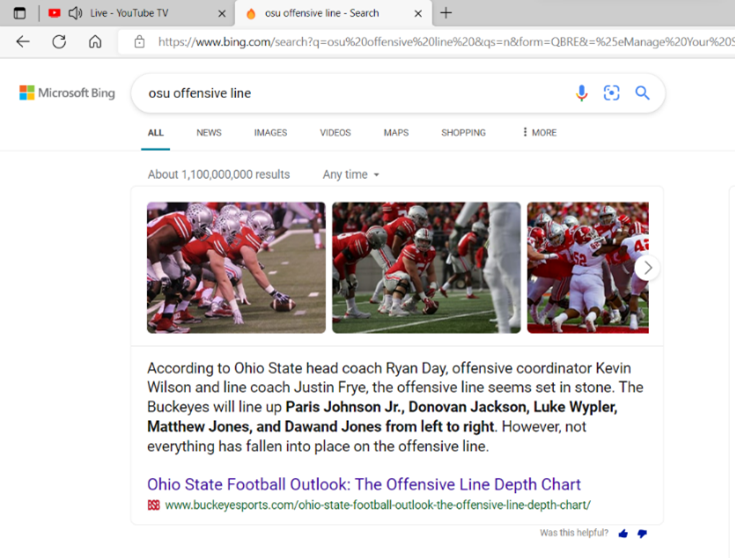
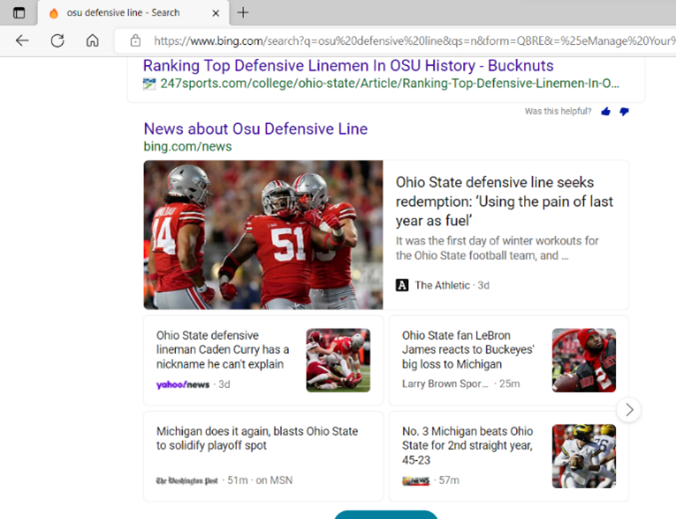

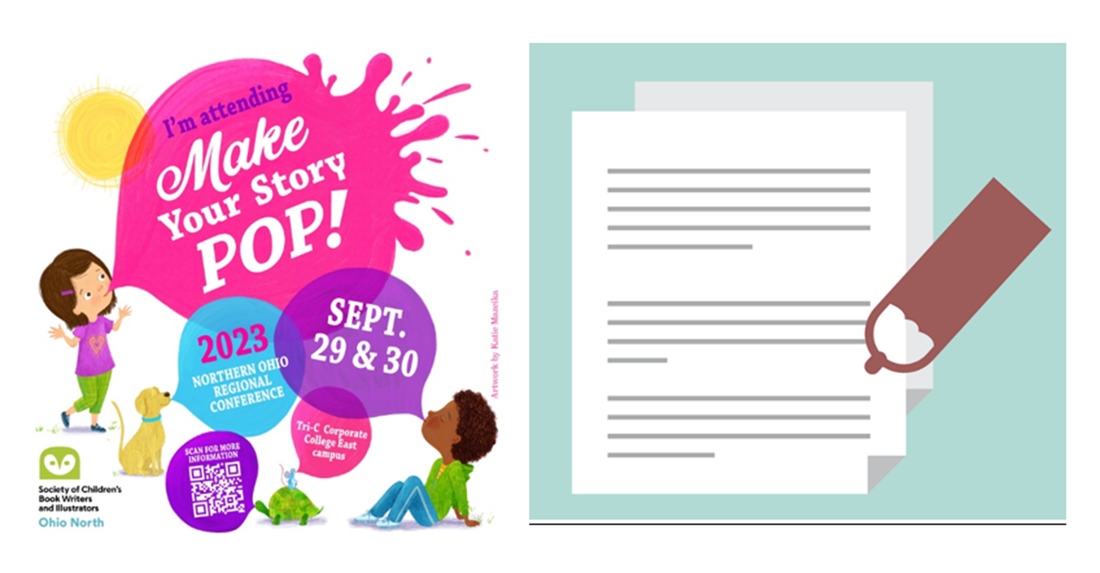
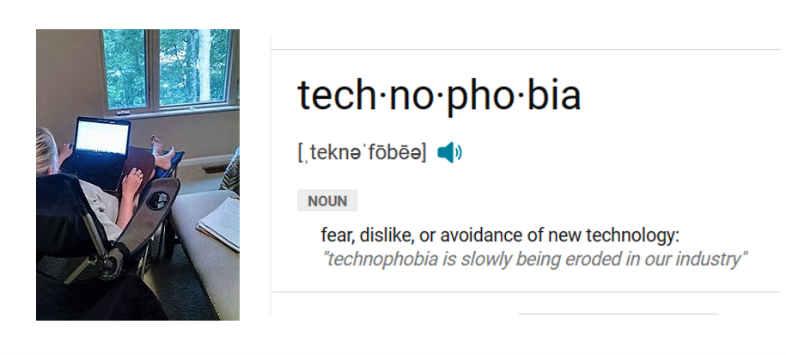
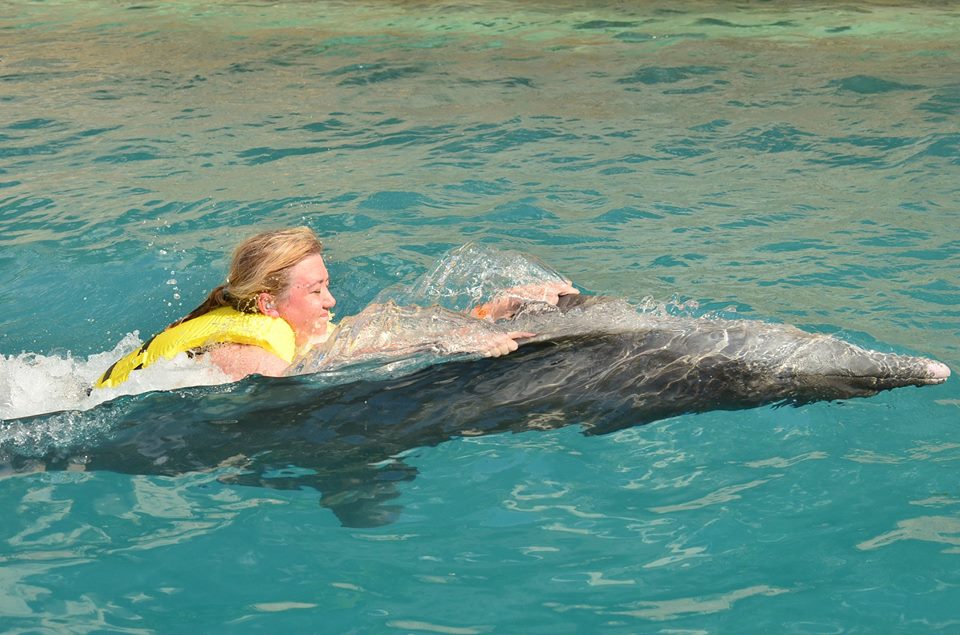
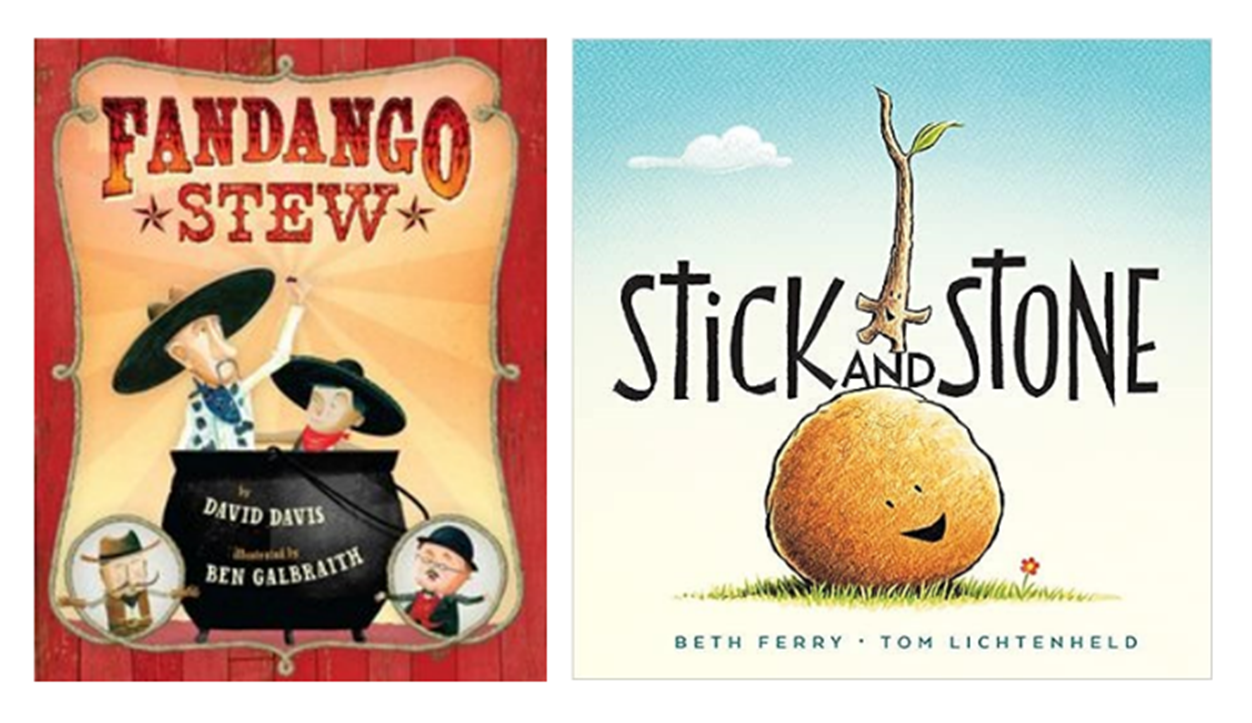
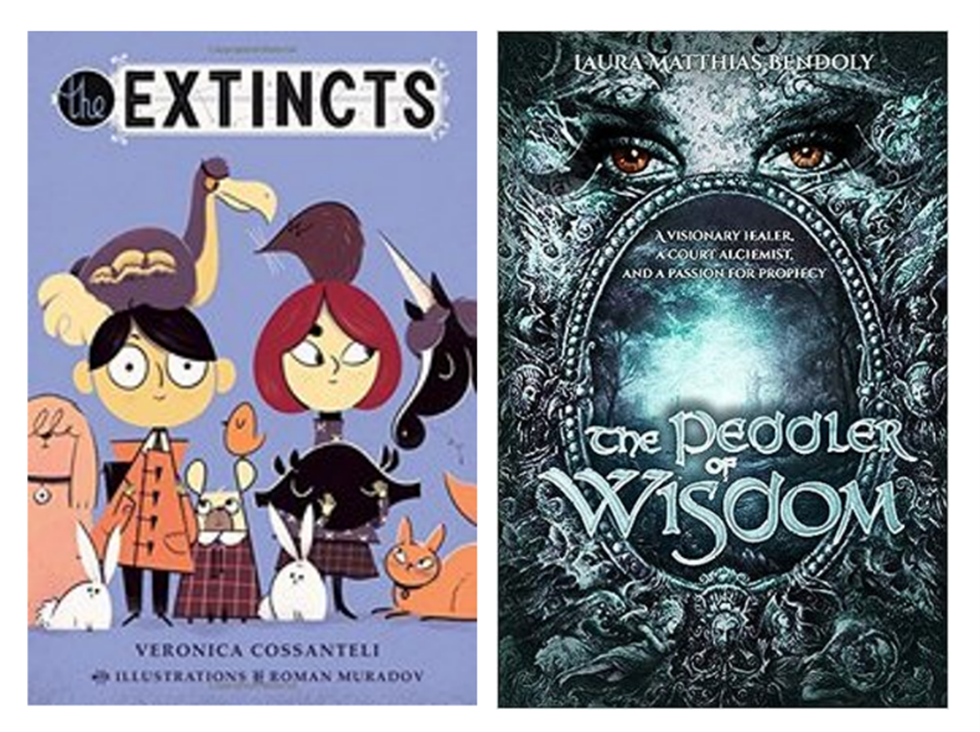
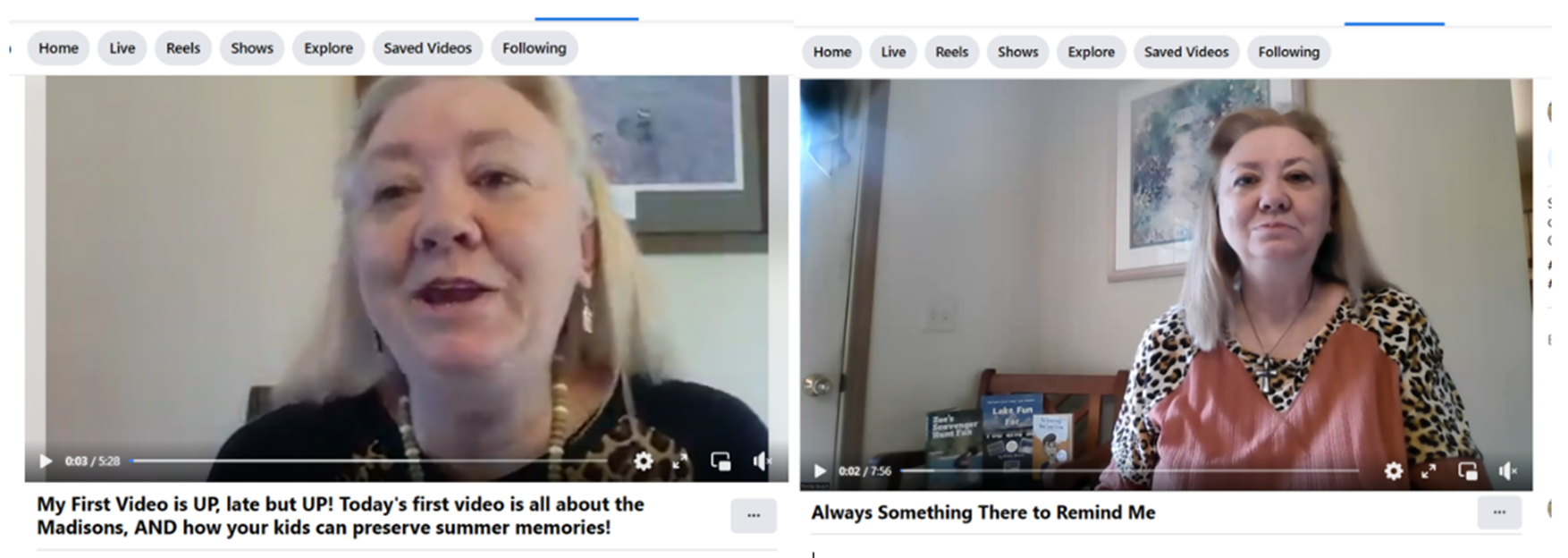

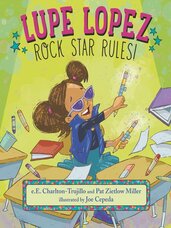
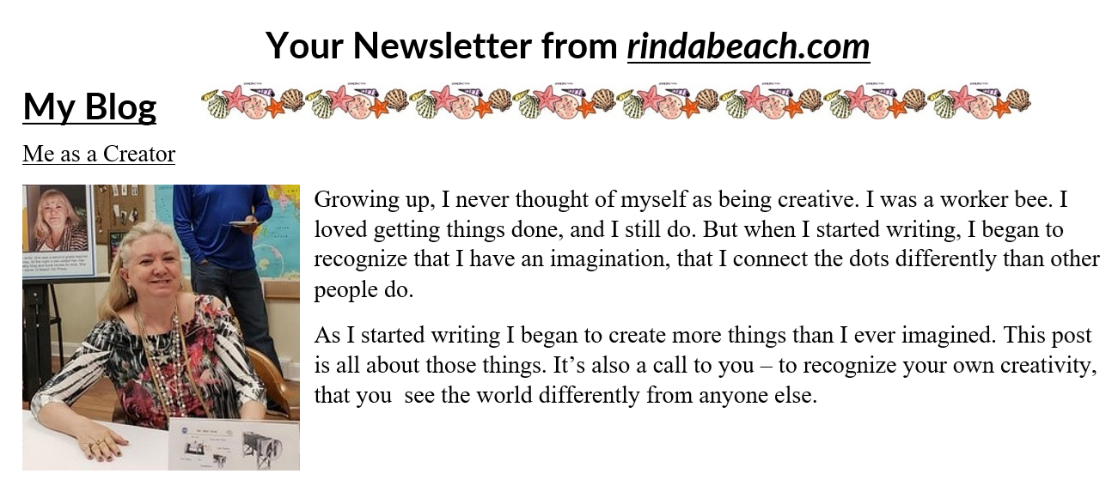
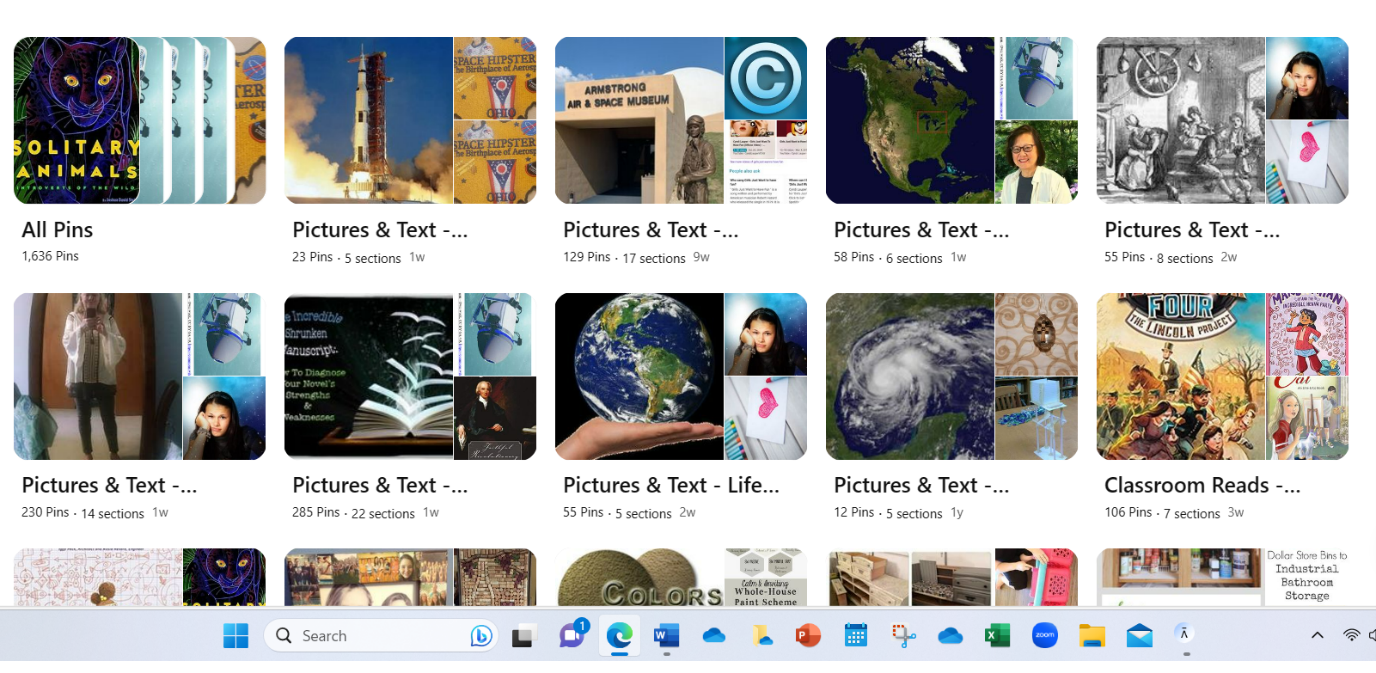
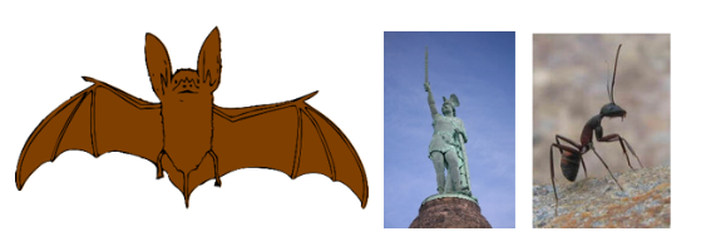
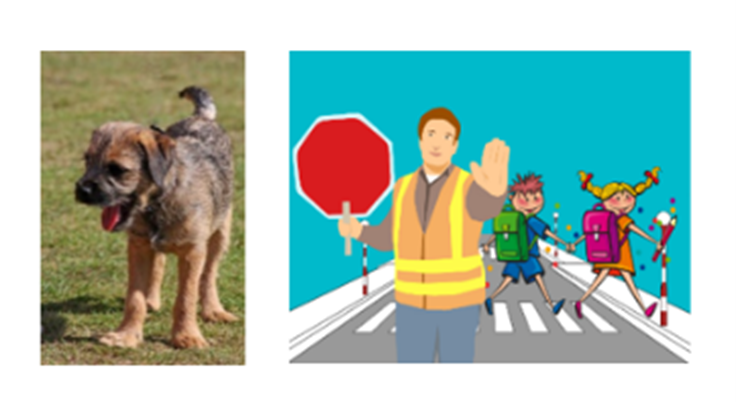
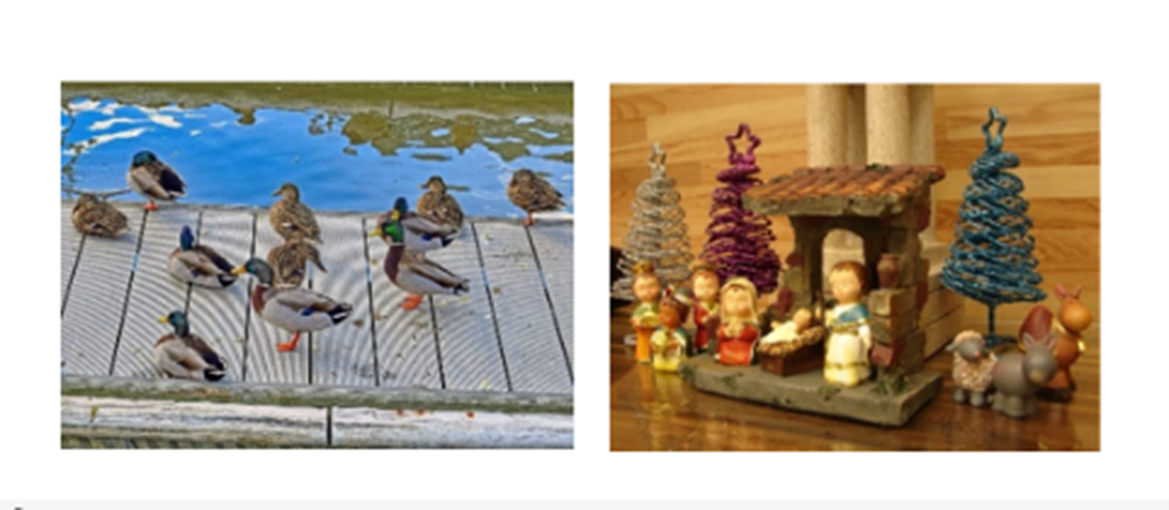
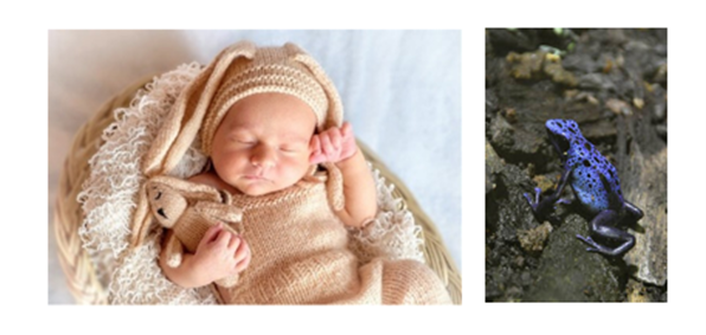
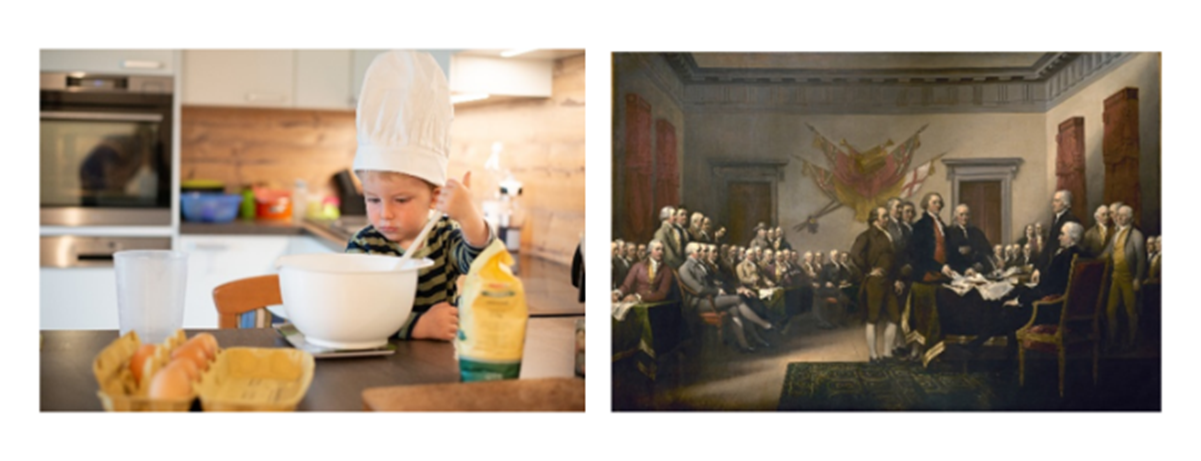
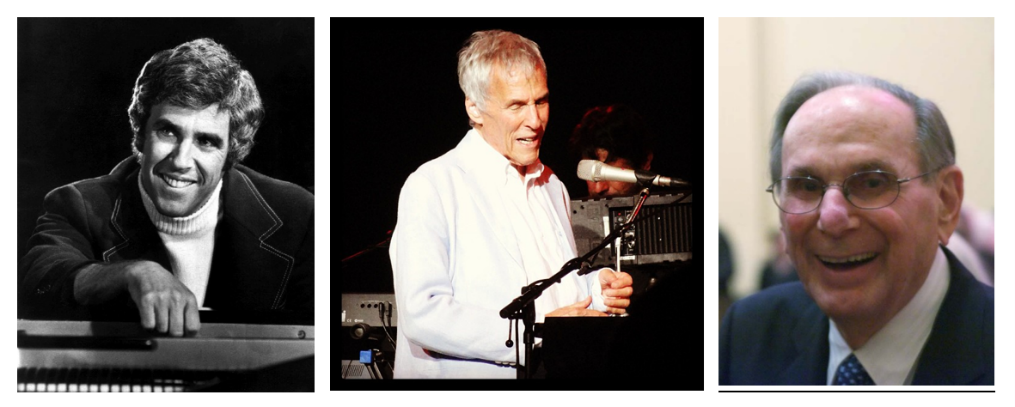
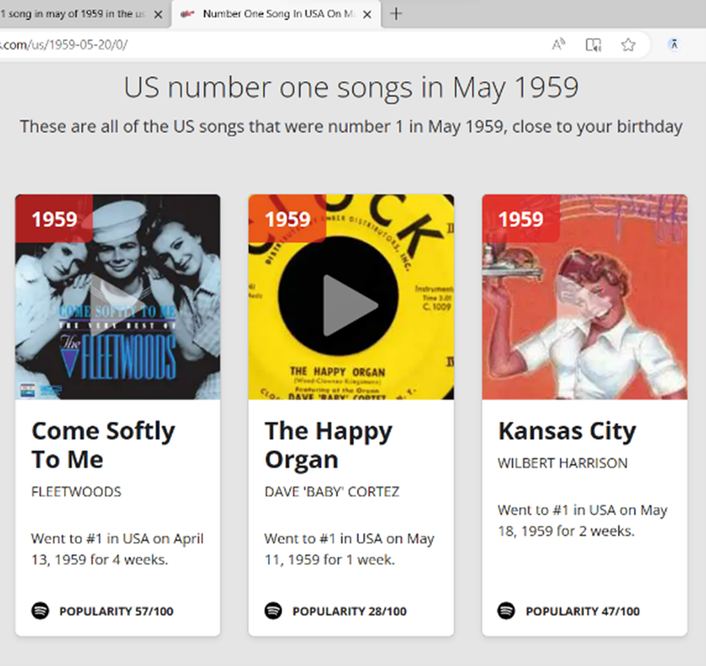
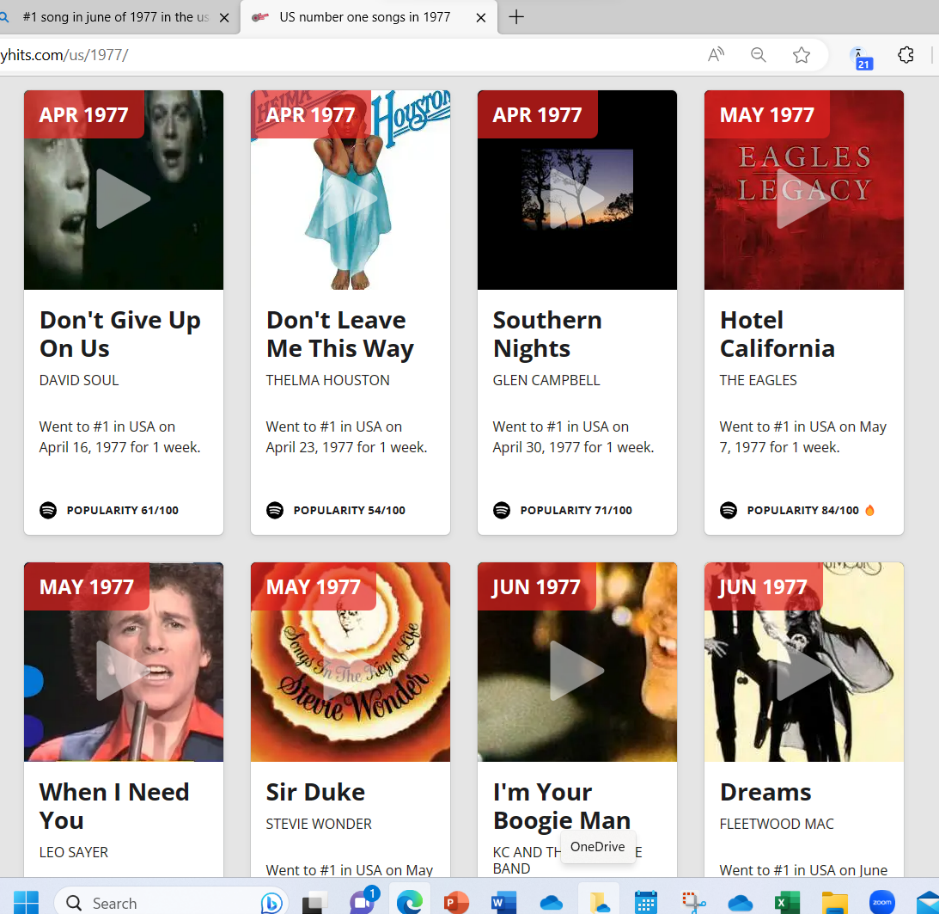
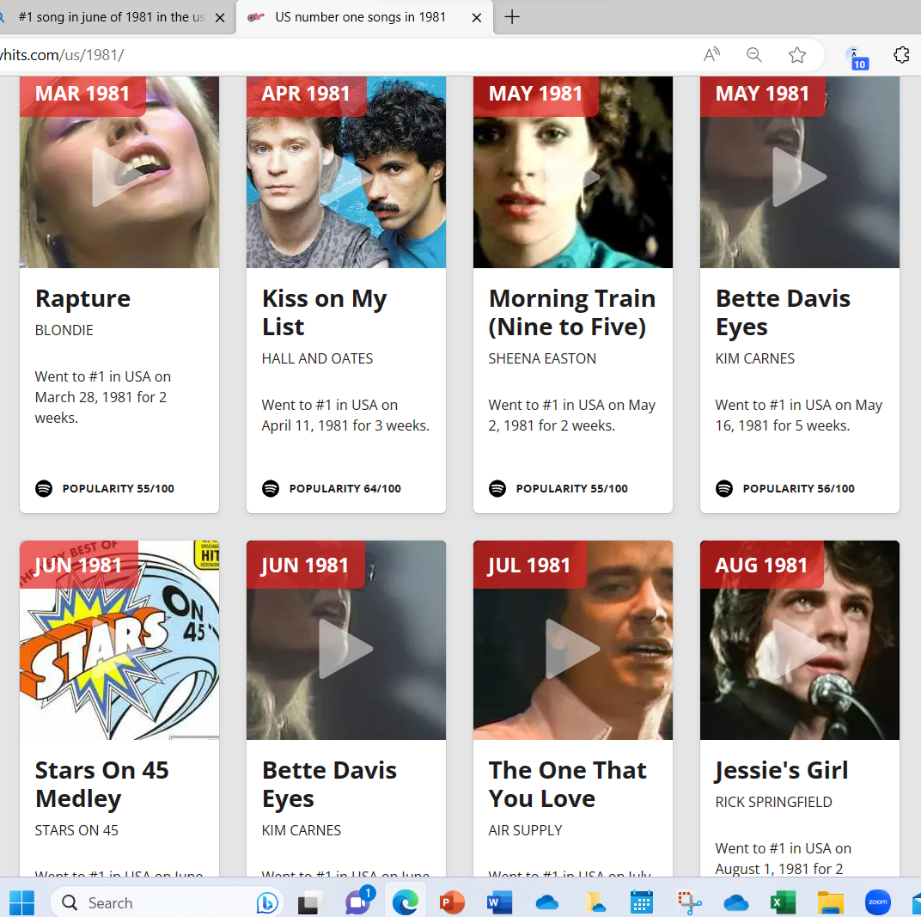
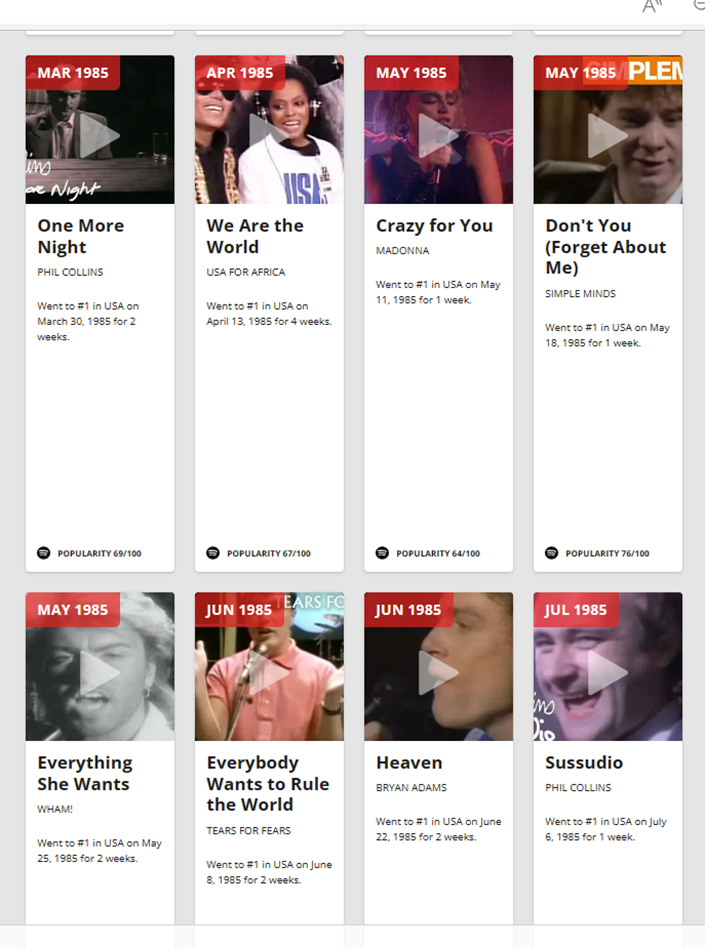
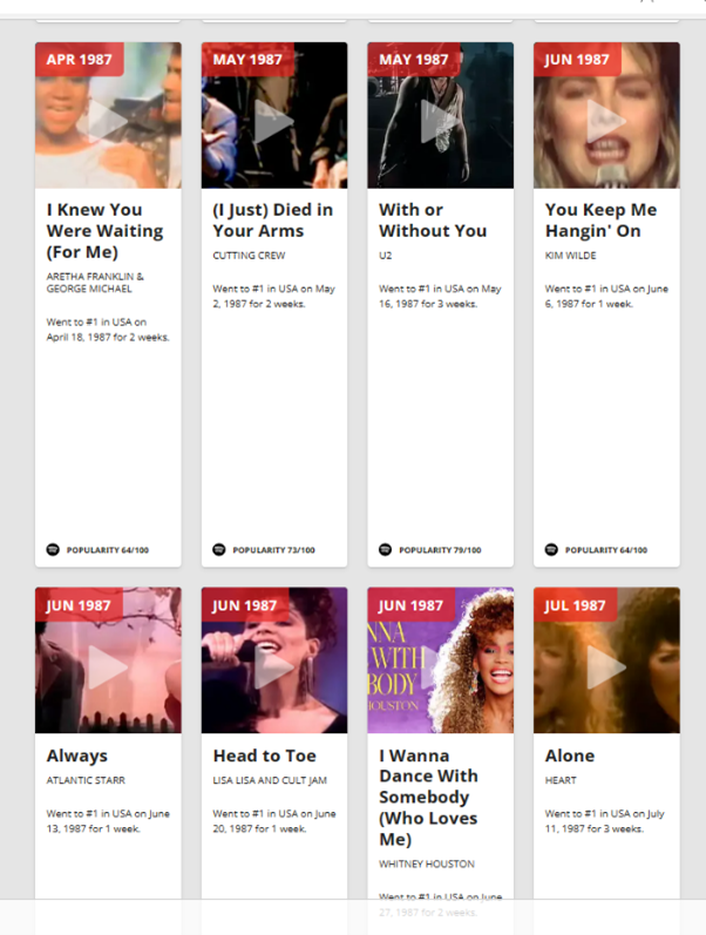
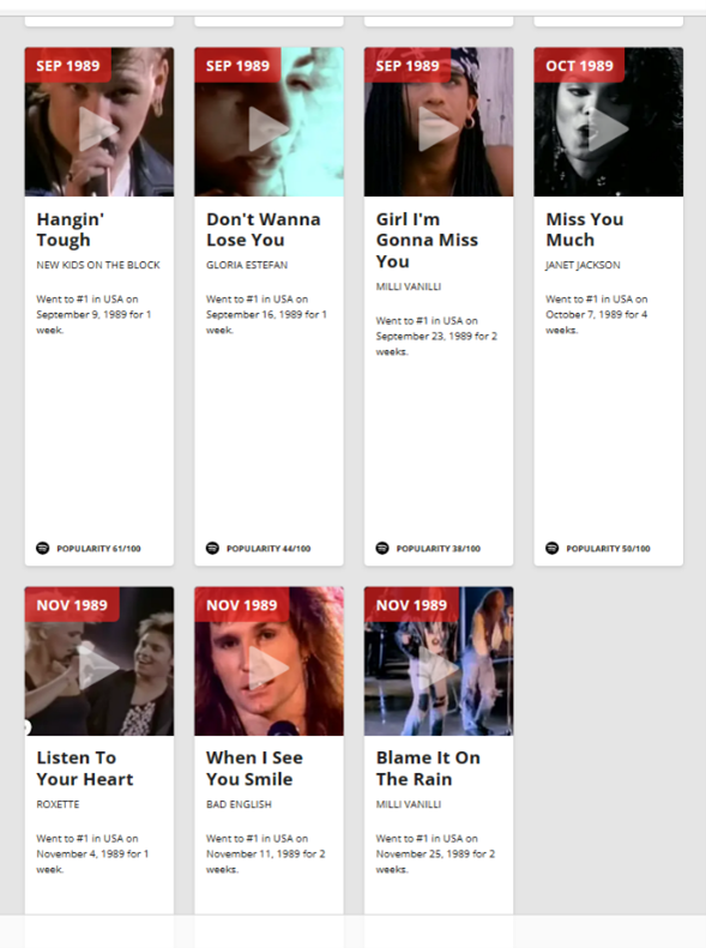
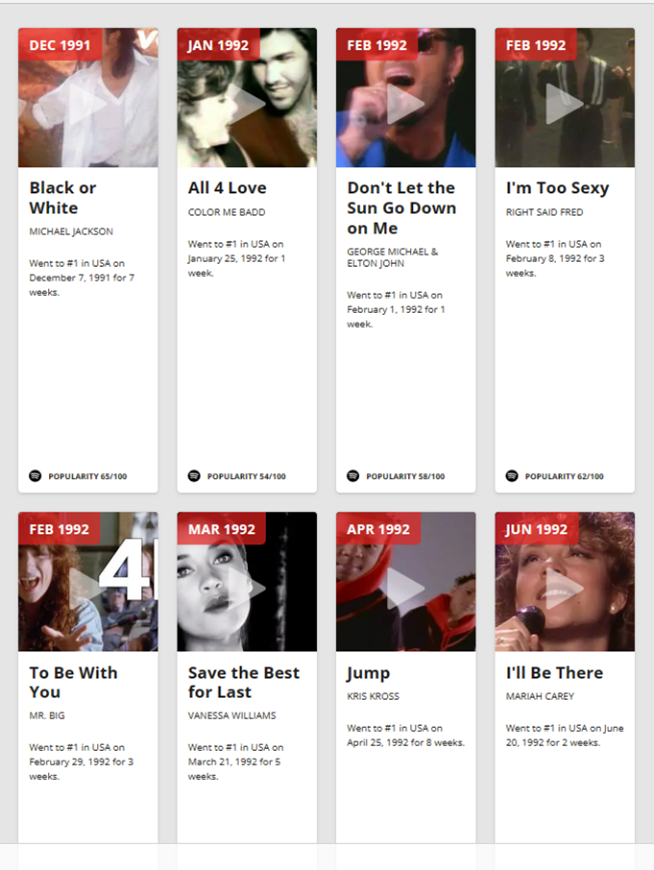
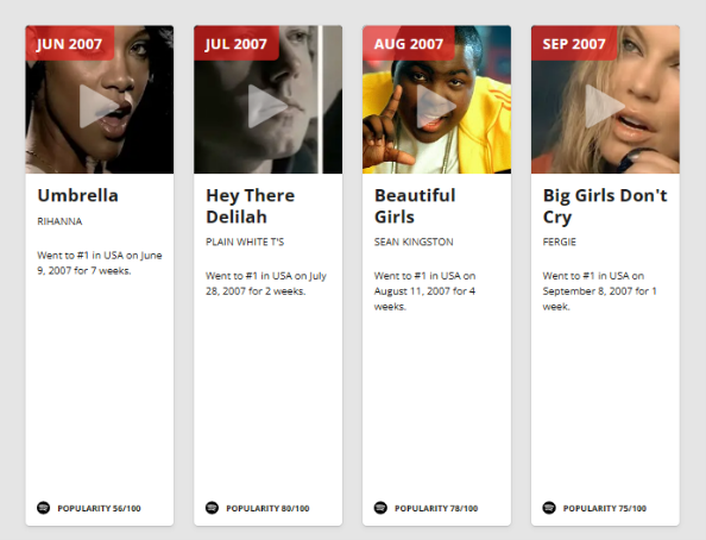
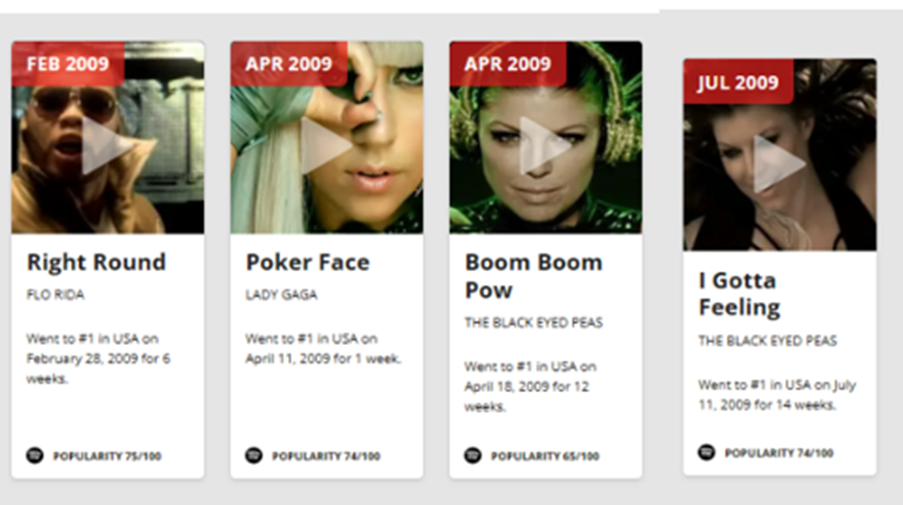
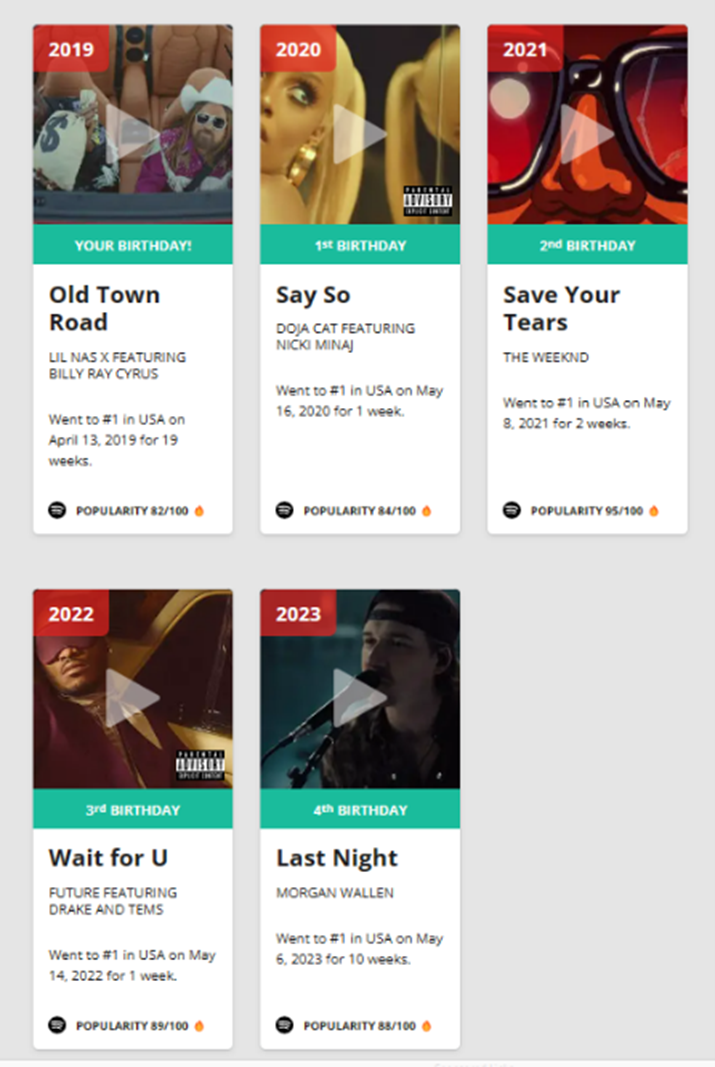
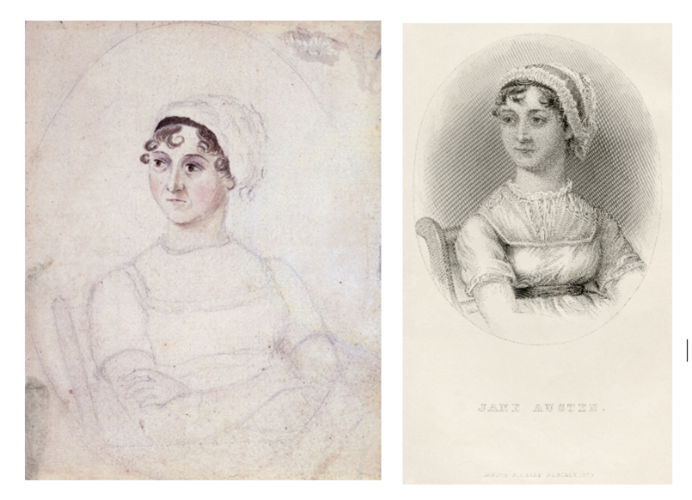
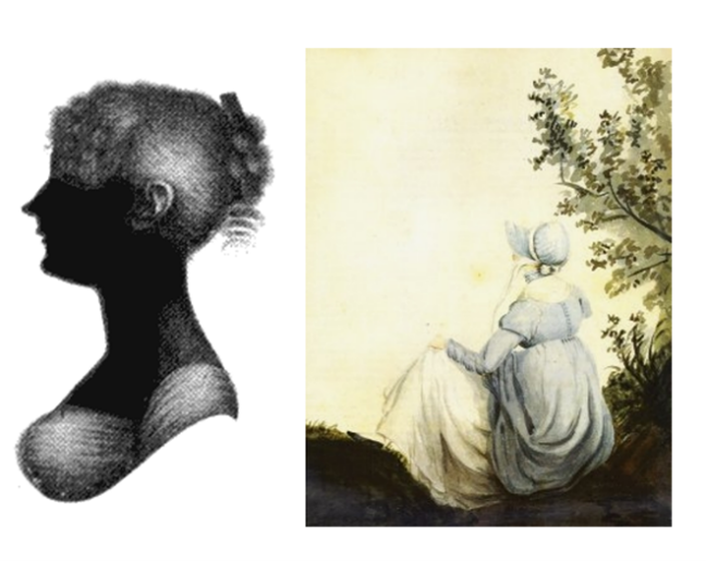
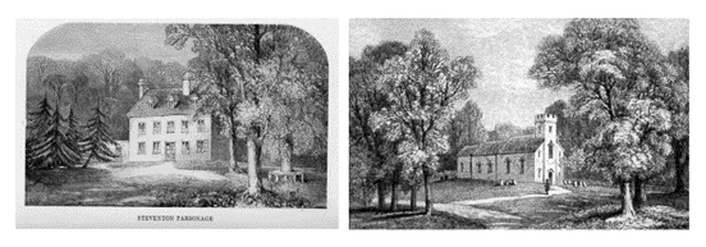


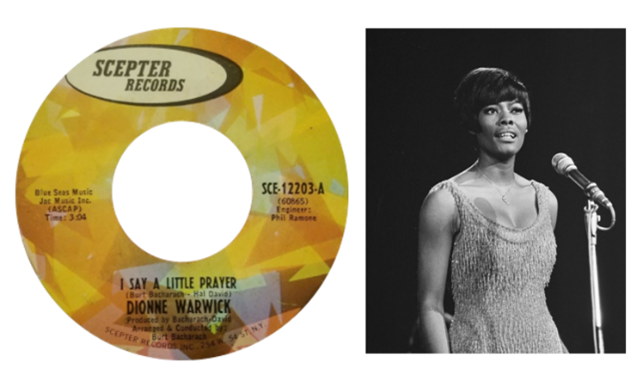
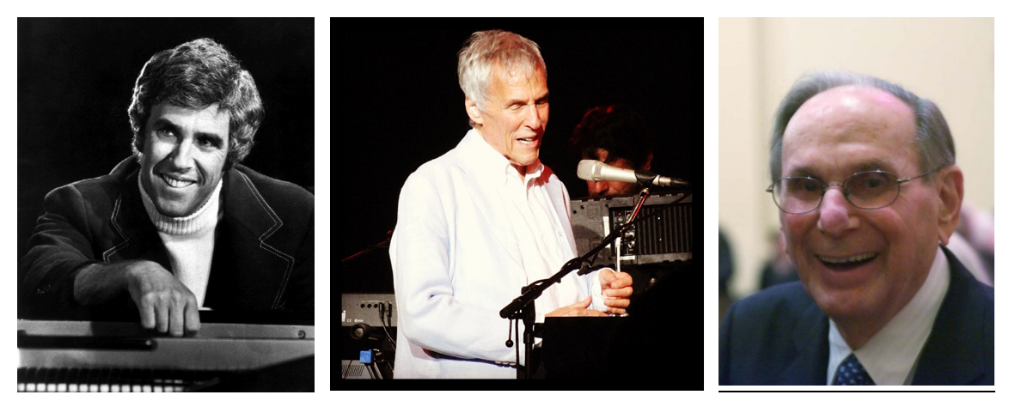

 RSS Feed
RSS Feed